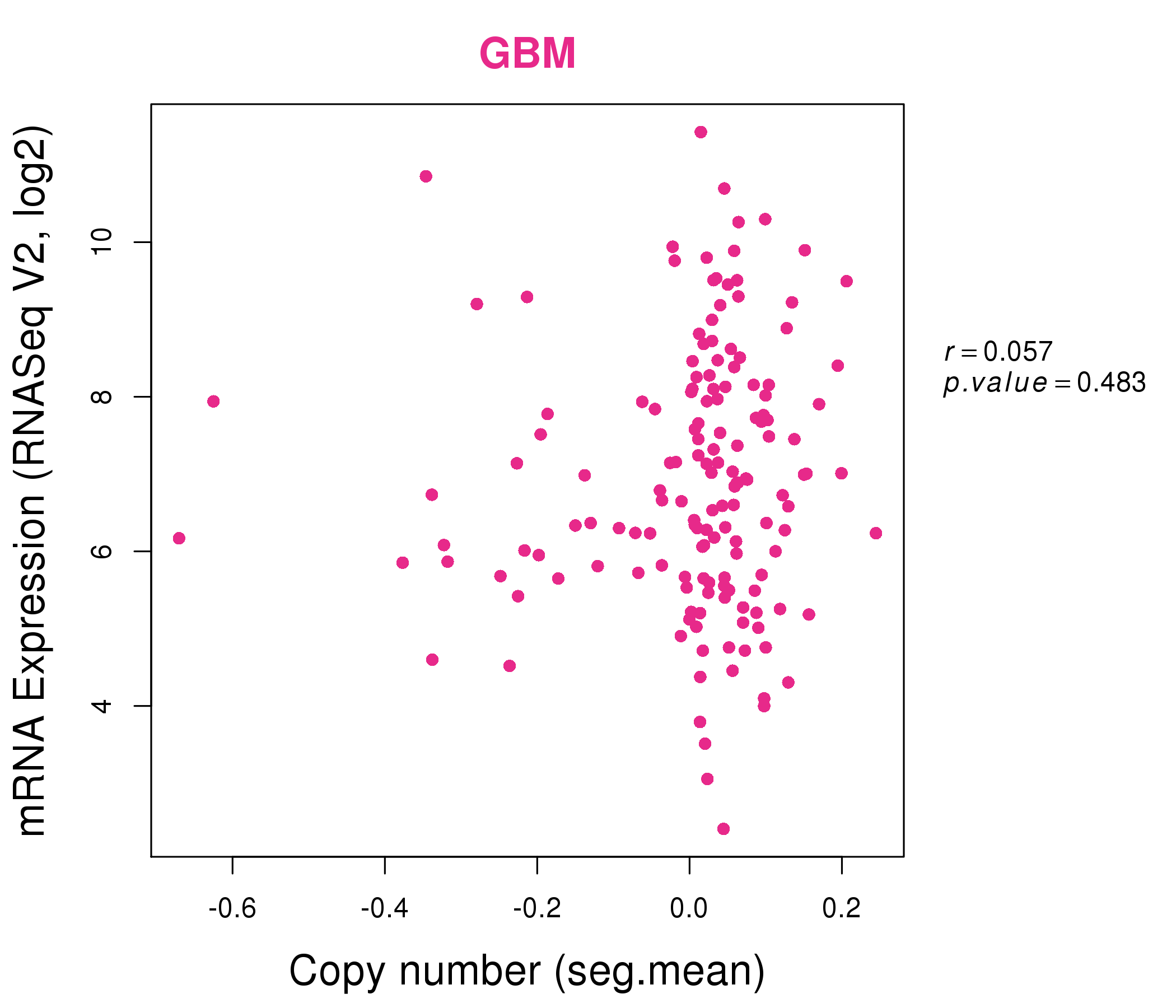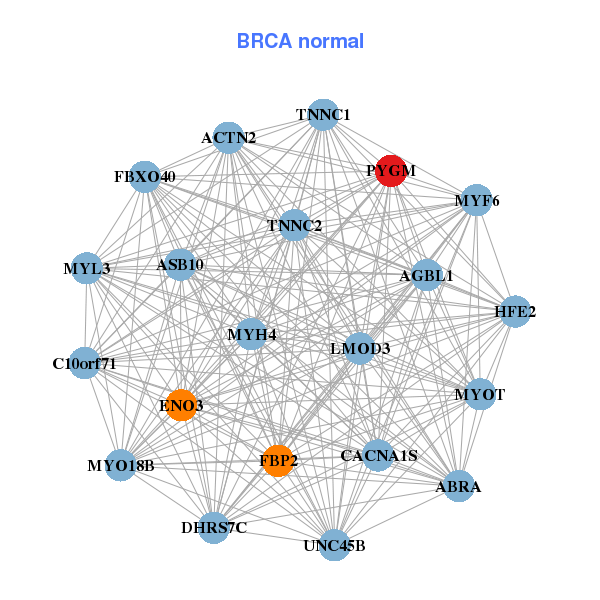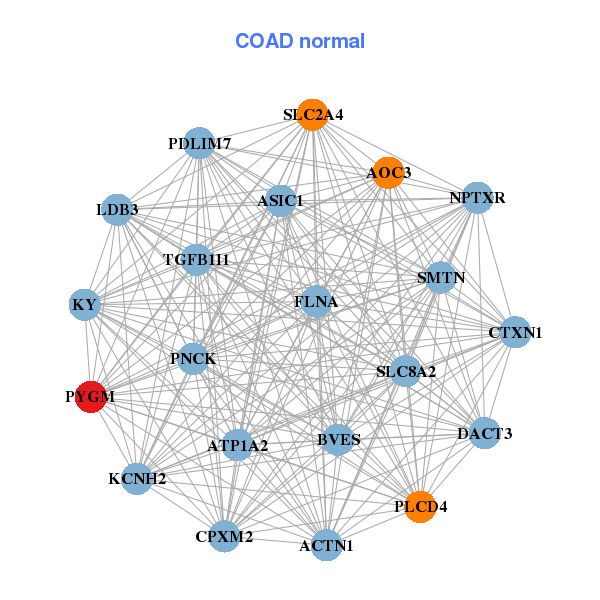|
||||||||||||||||||||
| |
| Phenotypic Information (metabolism pathway, cancer, disease, phenome) |
| |
| |
| Gene-Gene Network Information: Co-Expression Network, Interacting Genes & KEGG |
| |
|
| Gene Summary for PYGM |
| Basic gene info. | Gene symbol | PYGM |
| Gene name | phosphorylase, glycogen, muscle | |
| Synonyms | - | |
| Cytomap | UCSC genome browser: 11q12-q13.2 | |
| Genomic location | chr11 :64513860-64528187 | |
| Type of gene | protein-coding | |
| RefGenes | NM_001164716.1, NM_005609.2, | |
| Ensembl id | ENSG00000068976 | |
| Description | glycogen phosphorylase, muscle formmyophosphorylase | |
| Modification date | 20141219 | |
| dbXrefs | MIM : 608455 | |
| HGNC : HGNC | ||
| Ensembl : ENSG00000068976 | ||
| HPRD : 01986 | ||
| Vega : OTTHUMG00000066835 | ||
| Protein | UniProt: go to UniProt's Cross Reference DB Table | |
| Expression | CleanEX: HS_PYGM | |
| BioGPS: 5837 | ||
| Gene Expression Atlas: ENSG00000068976 | ||
| The Human Protein Atlas: ENSG00000068976 | ||
| Pathway | NCI Pathway Interaction Database: PYGM | |
| KEGG: PYGM | ||
| REACTOME: PYGM | ||
| ConsensusPathDB | ||
| Pathway Commons: PYGM | ||
| Metabolism | MetaCyc: PYGM | |
| HUMANCyc: PYGM | ||
| Regulation | Ensembl's Regulation: ENSG00000068976 | |
| miRBase: chr11 :64,513,860-64,528,187 | ||
| TargetScan: NM_001164716 | ||
| cisRED: ENSG00000068976 | ||
| Context | iHOP: PYGM | |
| cancer metabolism search in PubMed: PYGM | ||
| UCL Cancer Institute: PYGM | ||
| Assigned class in ccmGDB | C | |
| Top |
| Phenotypic Information for PYGM(metabolism pathway, cancer, disease, phenome) |
| Cancer | CGAP: PYGM |
| Familial Cancer Database: PYGM | |
| * This gene is included in those cancer gene databases. |
|
|
|
|
|
|
| ||||||||||||||
Oncogene 1 | Significant driver gene in | |||||||||||||||||||
| cf) number; DB name 1 Oncogene; http://nar.oxfordjournals.org/content/35/suppl_1/D721.long, 2 Tumor Suppressor gene; https://bioinfo.uth.edu/TSGene/, 3 Cancer Gene Census; http://www.nature.com/nrc/journal/v4/n3/abs/nrc1299.html, 4 CancerGenes; http://nar.oxfordjournals.org/content/35/suppl_1/D721.long, 5 Network of Cancer Gene; http://ncg.kcl.ac.uk/index.php, 1Therapeutic Vulnerabilities in Cancer; http://cbio.mskcc.org/cancergenomics/statius/ |
| KEGG_STARCH_AND_SUCROSE_METABOLISM REACTOME_METABOLISM_OF_CARBOHYDRATES REACTOME_GLUCOSE_METABOLISM | |
| OMIM | |
| Orphanet | |
| Disease | KEGG Disease: PYGM |
| MedGen: PYGM (Human Medical Genetics with Condition) | |
| ClinVar: PYGM | |
| Phenotype | MGI: PYGM (International Mouse Phenotyping Consortium) |
| PhenomicDB: PYGM | |
| Mutations for PYGM |
| * Under tables are showing count per each tissue to give us broad intuition about tissue specific mutation patterns.You can go to the detailed page for each mutation database's web site. |
| - Statistics for Tissue and Mutation type | Top |
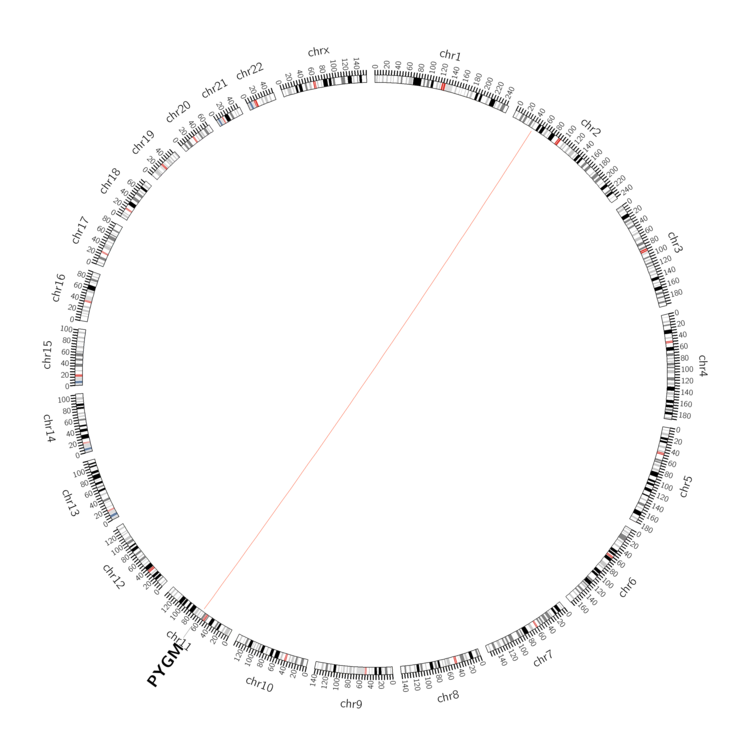 |
| - For Inter-chromosomal Variations |
| * Inter-chromosomal variantions includes 'interchromosomal amplicon to amplicon', 'interchromosomal amplicon to non-amplified dna', 'interchromosomal insertion', 'Interchromosomal unknown type'. |
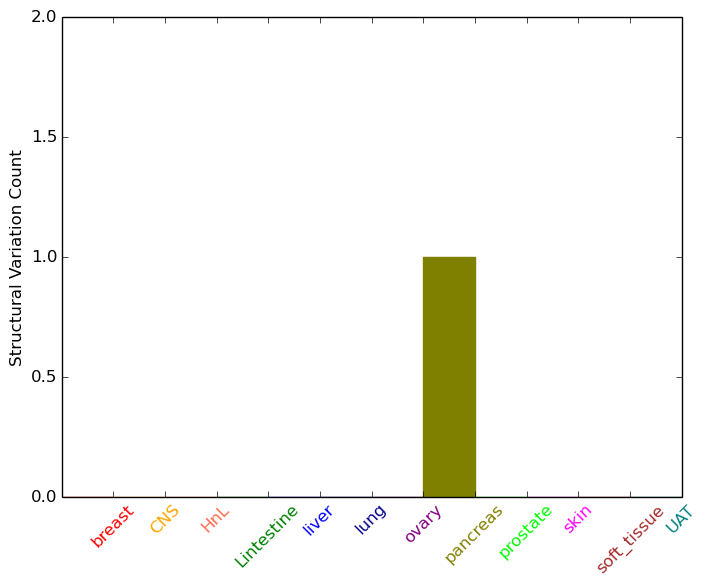 |
| - For Intra-chromosomal Variations |
| There's no intra-chromosomal structural variation. |
| Sample | Symbol_a | Chr_a | Start_a | End_a | Symbol_b | Chr_b | Start_b | End_b |
| cf) Tissue number; Tissue name (1;Breast, 2;Central_nervous_system, 3;Haematopoietic_and_lymphoid_tissue, 4;Large_intestine, 5;Liver, 6;Lung, 7;Ovary, 8;Pancreas, 9;Prostate, 10;Skin, 11;Soft_tissue, 12;Upper_aerodigestive_tract) |
| * From mRNA Sanger sequences, Chitars2.0 arranged chimeric transcripts. This table shows PYGM related fusion information. |
| ID | Head Gene | Tail Gene | Accession | Gene_a | qStart_a | qEnd_a | Chromosome_a | tStart_a | tEnd_a | Gene_a | qStart_a | qEnd_a | Chromosome_a | tStart_a | tEnd_a |
| Top |
| There's no copy number variation information in COSMIC data for this gene. |
| Top |
|
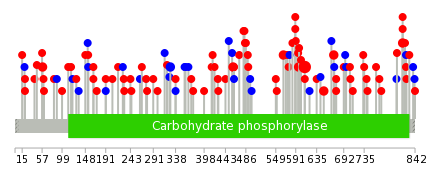 |
| Top |
| Stat. for Non-Synonymous SNVs (# total SNVs=79) | (# total SNVs=11) |
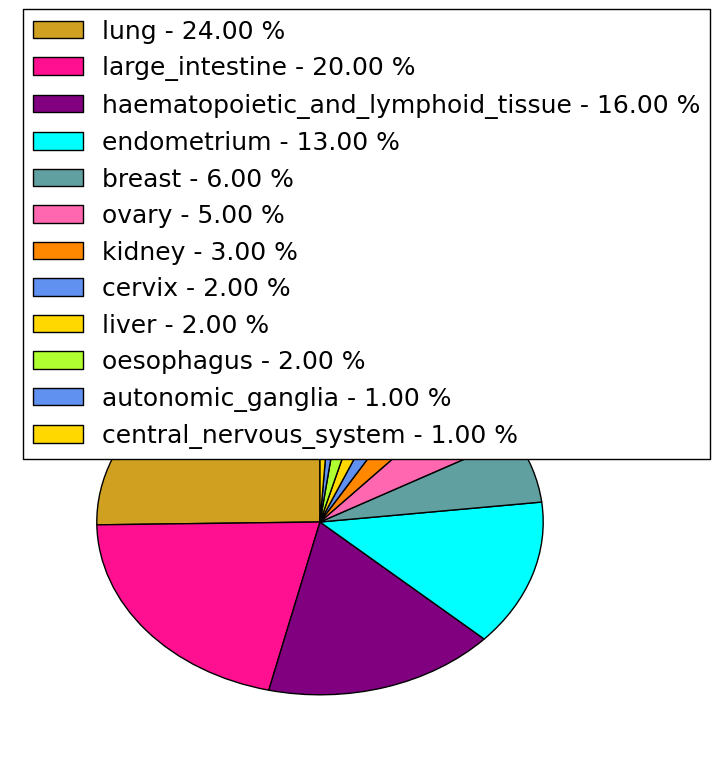 | 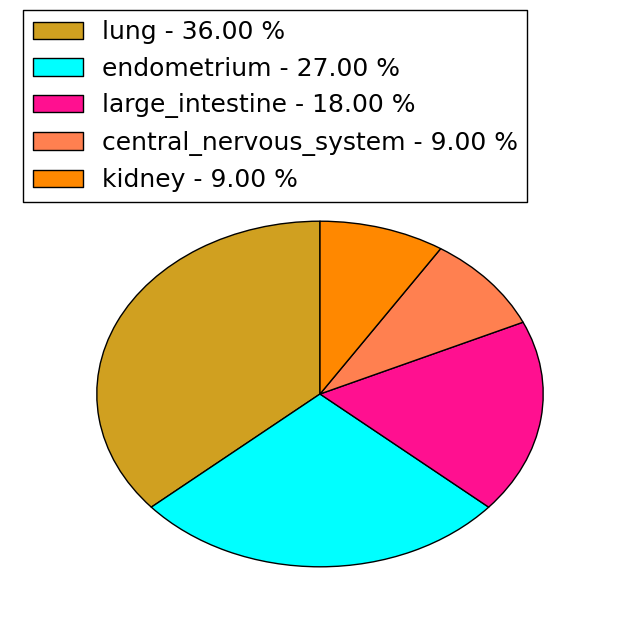 |
(# total SNVs=1) | (# total SNVs=0) |
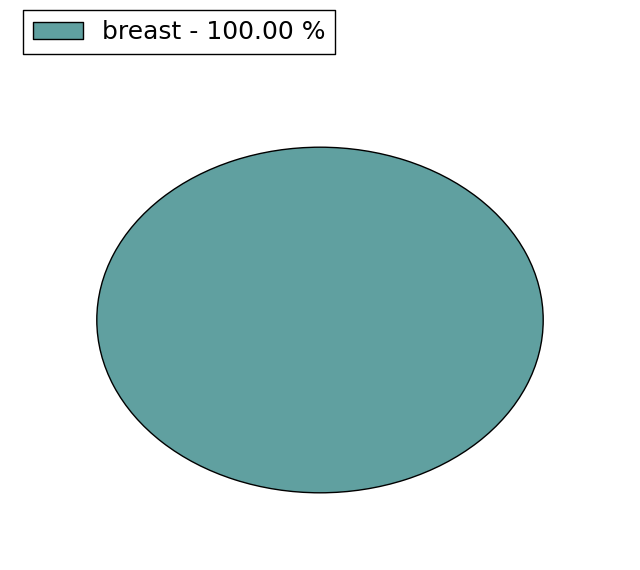 |
| Top |
| * When you move the cursor on each content, you can see more deailed mutation information on the Tooltip. Those are primary_site,primary_histology,mutation(aa),pubmedID. |
| GRCh37 position | Mutation(aa) | Unique sampleID count |
| chr11:64518938-64518938 | p.A610P | 10 |
| chr11:64514214-64514214 | p.R816S | 4 |
| chr11:64527198-64527198 | p.H58R | 2 |
| chr11:64519471-64519471 | p.D565N | 2 |
| chr11:64518013-64518013 | p.G671D | 2 |
| chr11:64519106-64519106 | p.K597T | 2 |
| chr11:64519513-64519513 | p.E551K | 2 |
| chr11:64522183-64522183 | p.F327F | 2 |
| chr11:64521017-64521017 | p.I459M | 2 |
| chr11:64518818-64518818 | p.R650G | 2 |
| Top |
|
 |
| Point Mutation/ Tissue ID | 1 | 2 | 3 | 4 | 5 | 6 | 7 | 8 | 9 | 10 | 11 | 12 | 13 | 14 | 15 | 16 | 17 | 18 | 19 | 20 |
| # sample | 5 | 3 | 2 | 10 | 2 | 7 | 3 | 1 | 10 | 7 | 3 | 18 | 11 | 1 | 11 | |||||
| # mutation | 5 | 3 | 2 | 10 | 2 | 7 | 3 | 1 | 11 | 7 | 3 | 20 | 11 | 1 | 13 | |||||
| nonsynonymous SNV | 3 | 3 | 2 | 10 | 1 | 3 | 3 | 9 | 5 | 3 | 9 | 11 | 10 | |||||||
| synonymous SNV | 2 | 1 | 4 | 1 | 2 | 2 | 11 | 1 | 3 |
| cf) Tissue ID; Tissue type (1; BLCA[Bladder Urothelial Carcinoma], 2; BRCA[Breast invasive carcinoma], 3; CESC[Cervical squamous cell carcinoma and endocervical adenocarcinoma], 4; COAD[Colon adenocarcinoma], 5; GBM[Glioblastoma multiforme], 6; Glioma Low Grade, 7; HNSC[Head and Neck squamous cell carcinoma], 8; KICH[Kidney Chromophobe], 9; KIRC[Kidney renal clear cell carcinoma], 10; KIRP[Kidney renal papillary cell carcinoma], 11; LAML[Acute Myeloid Leukemia], 12; LUAD[Lung adenocarcinoma], 13; LUSC[Lung squamous cell carcinoma], 14; OV[Ovarian serous cystadenocarcinoma ], 15; PAAD[Pancreatic adenocarcinoma], 16; PRAD[Prostate adenocarcinoma], 17; SKCM[Skin Cutaneous Melanoma], 18:STAD[Stomach adenocarcinoma], 19:THCA[Thyroid carcinoma], 20:UCEC[Uterine Corpus Endometrial Carcinoma]) |
| Top |
| * We represented just top 10 SNVs. When you move the cursor on each content, you can see more deailed mutation information on the Tooltip. Those are primary_site, primary_histology, mutation(aa), pubmedID. |
| Genomic Position | Mutation(aa) | Unique sampleID count |
| chr11:64527201 | p.D477N,PYGM | 2 |
| chr11:64519471 | p.A277A,PYGM | 2 |
| chr11:64523005 | p.T141M,PYGM | 2 |
| chr11:64525340 | p.E103Q,PYGM | 2 |
| chr11:64521495 | p.A57D,PYGM | 2 |
| chr11:64521742 | p.A369A,PYGM | 1 |
| chr11:64526158 | p.I188T,PYGM | 1 |
| chr11:64518837 | p.L153L | 1 |
| chr11:64522800 | p.Q636K,PYGM | 1 |
| chr11:64519430 | p.H495L,PYGM | 1 |
| * Copy number data were extracted from TCGA using R package TCGA-Assembler. The URLs of all public data files on TCGA DCC data server were gathered on Jan-05-2015. Function ProcessCNAData in TCGA-Assembler package was used to obtain gene-level copy number value which is calculated as the average copy number of the genomic region of a gene. |
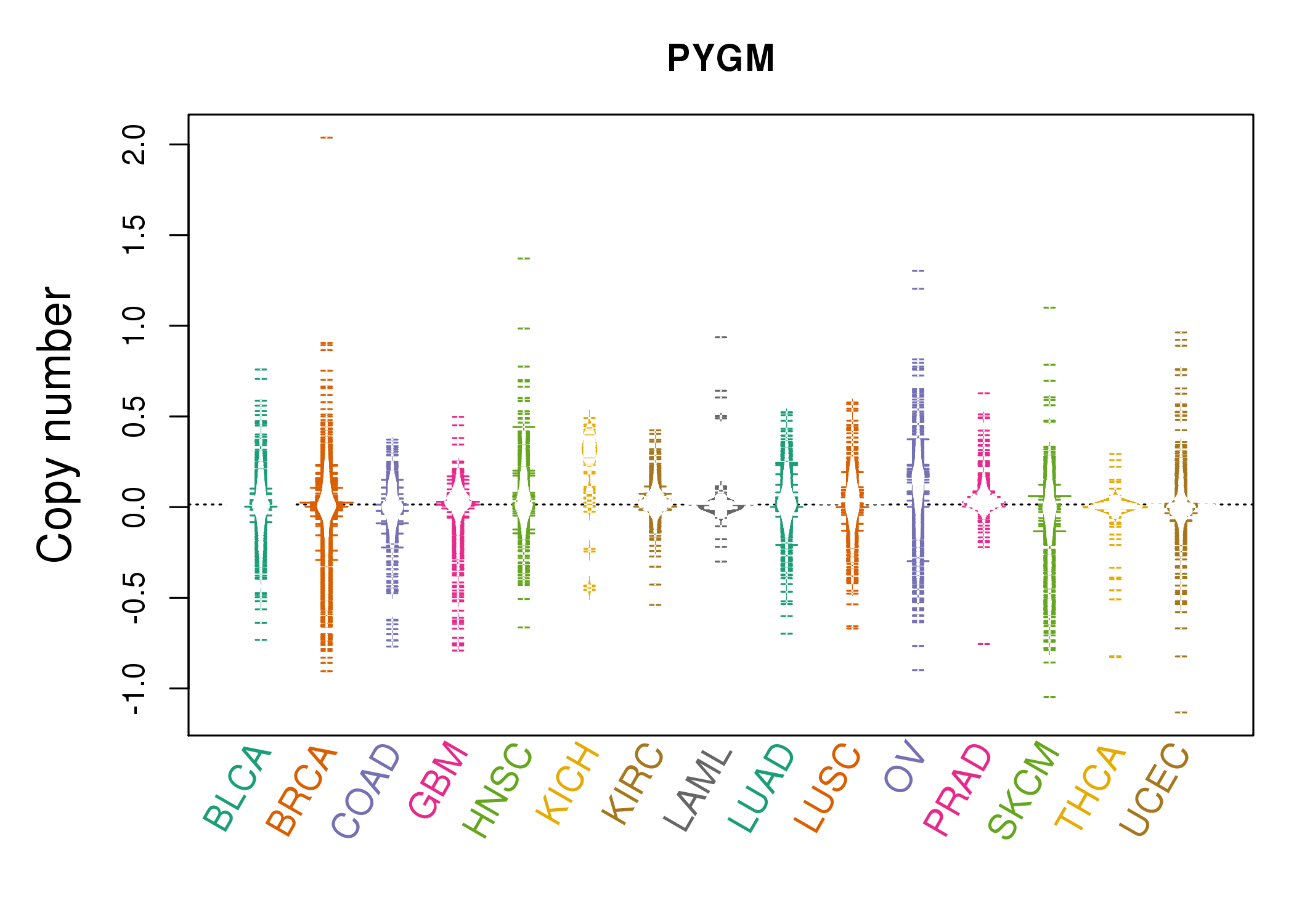 |
| cf) Tissue ID[Tissue type]: BLCA[Bladder Urothelial Carcinoma], BRCA[Breast invasive carcinoma], CESC[Cervical squamous cell carcinoma and endocervical adenocarcinoma], COAD[Colon adenocarcinoma], GBM[Glioblastoma multiforme], Glioma Low Grade, HNSC[Head and Neck squamous cell carcinoma], KICH[Kidney Chromophobe], KIRC[Kidney renal clear cell carcinoma], KIRP[Kidney renal papillary cell carcinoma], LAML[Acute Myeloid Leukemia], LUAD[Lung adenocarcinoma], LUSC[Lung squamous cell carcinoma], OV[Ovarian serous cystadenocarcinoma ], PAAD[Pancreatic adenocarcinoma], PRAD[Prostate adenocarcinoma], SKCM[Skin Cutaneous Melanoma], STAD[Stomach adenocarcinoma], THCA[Thyroid carcinoma], UCEC[Uterine Corpus Endometrial Carcinoma] |
| Top |
| Gene Expression for PYGM |
| * CCLE gene expression data were extracted from CCLE_Expression_Entrez_2012-10-18.res: Gene-centric RMA-normalized mRNA expression data. |
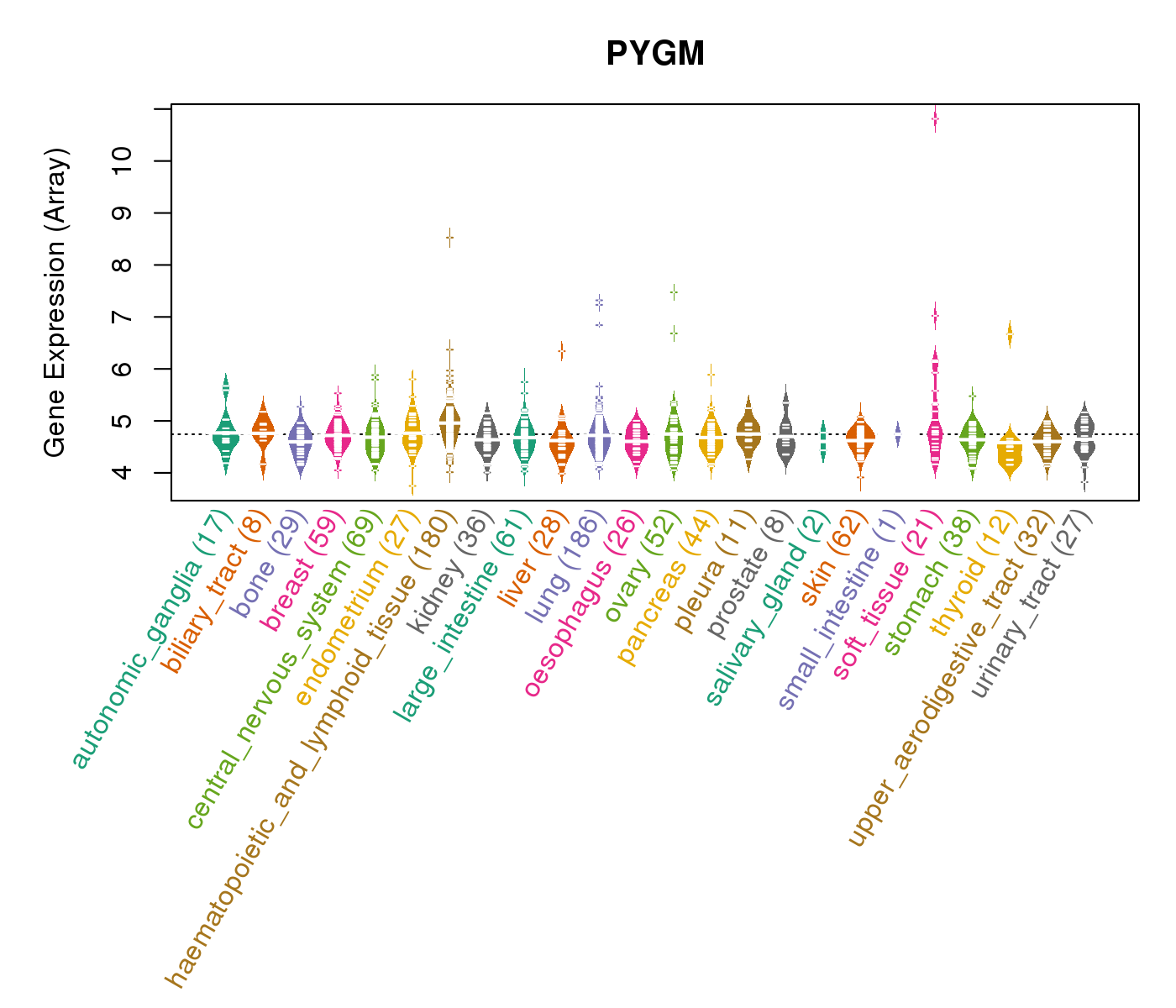 |
| * Normalized gene expression data of RNASeqV2 was extracted from TCGA using R package TCGA-Assembler. The URLs of all public data files on TCGA DCC data server were gathered at Jan-05-2015. Only eight cancer types have enough normal control samples for differential expression analysis. (t test, adjusted p<0.05 (using Benjamini-Hochberg FDR)) |
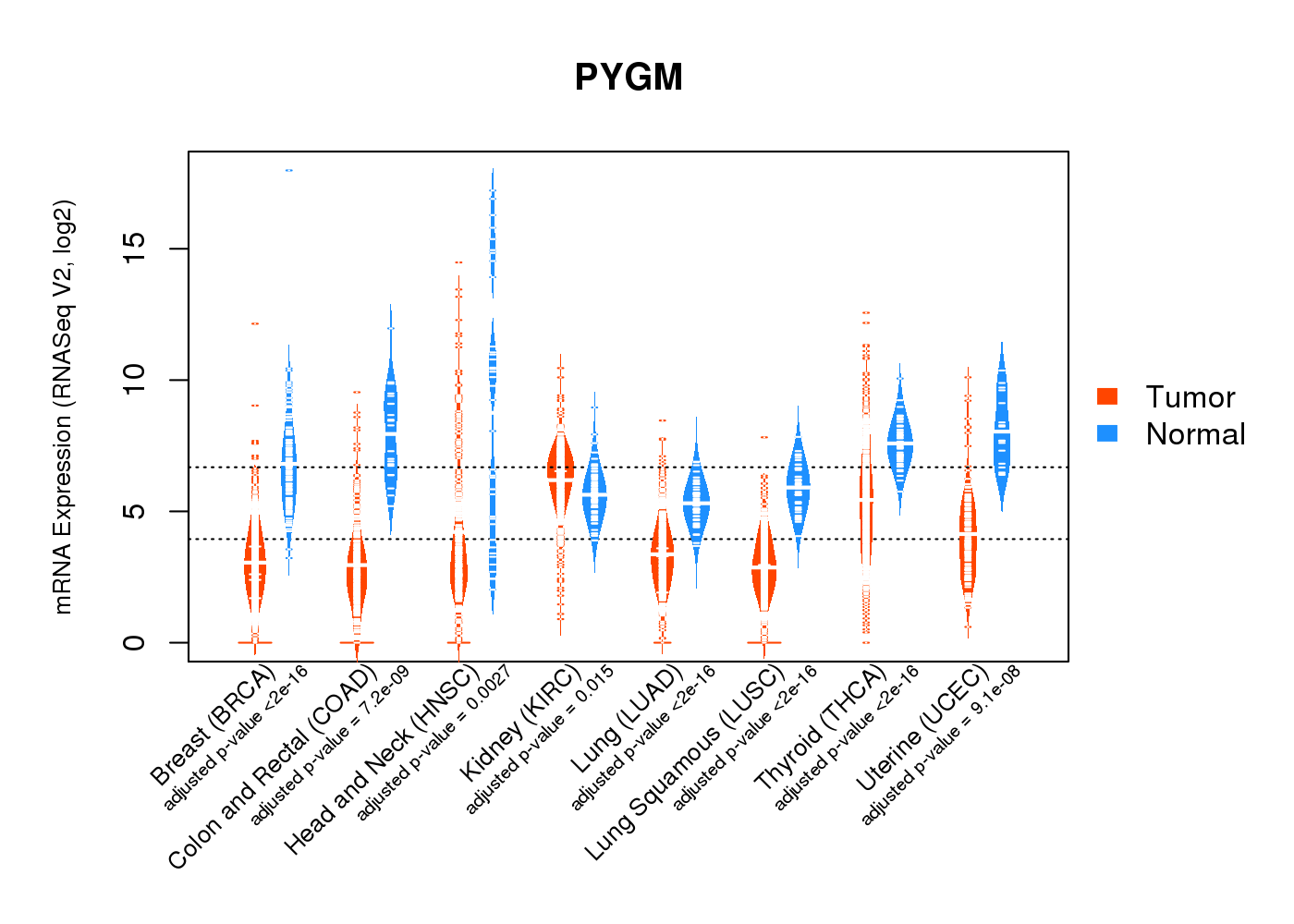 |
| Top |
| * This plots show the correlation between CNV and gene expression. |
: Open all plots for all cancer types
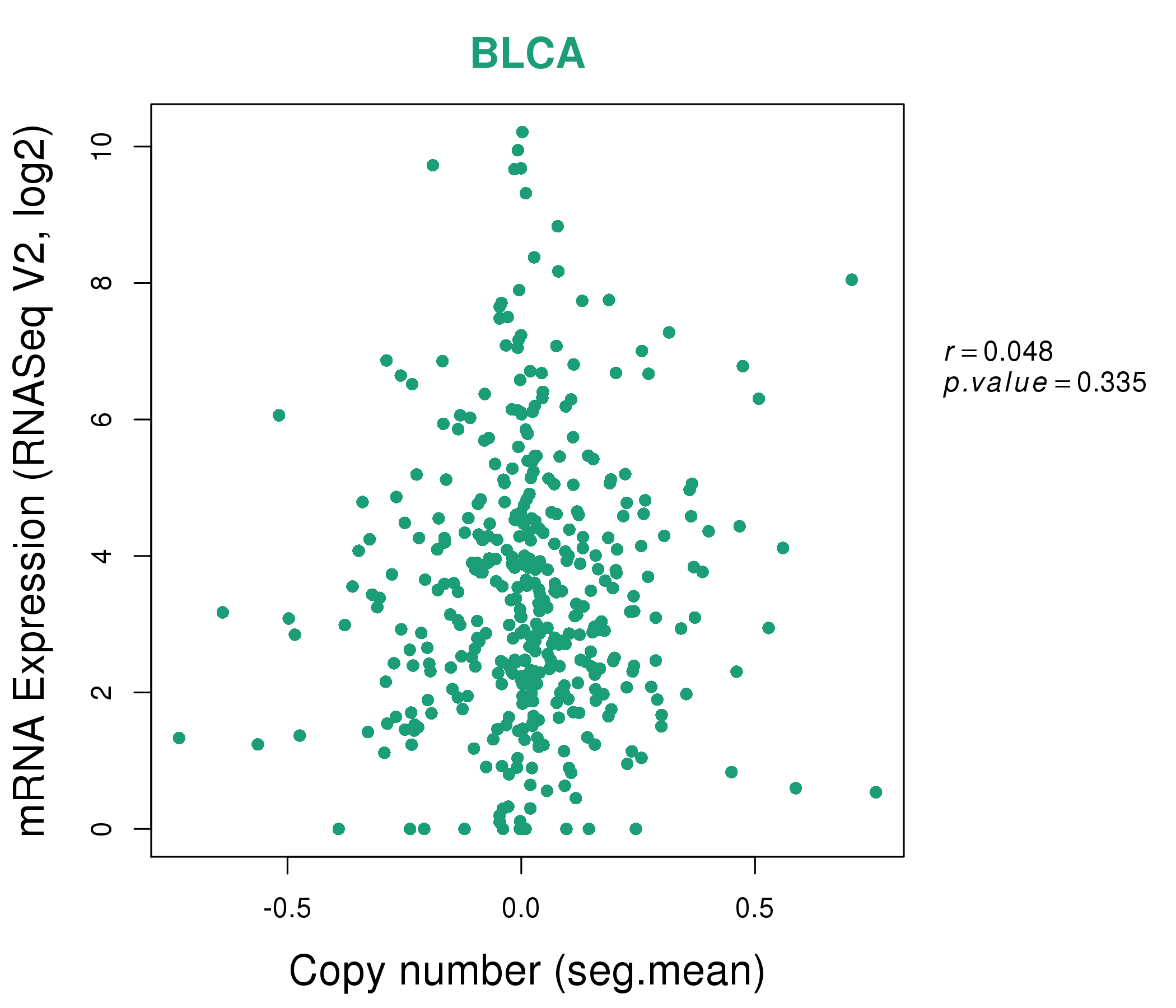 |
|
 |
|
| Top |
| Gene-Gene Network Information |
| * Co-Expression network figures were drawn using R package igraph. Only the top 20 genes with the highest correlations were shown. Red circle: input gene, orange circle: cell metabolism gene, sky circle: other gene |
: Open all plots for all cancer types
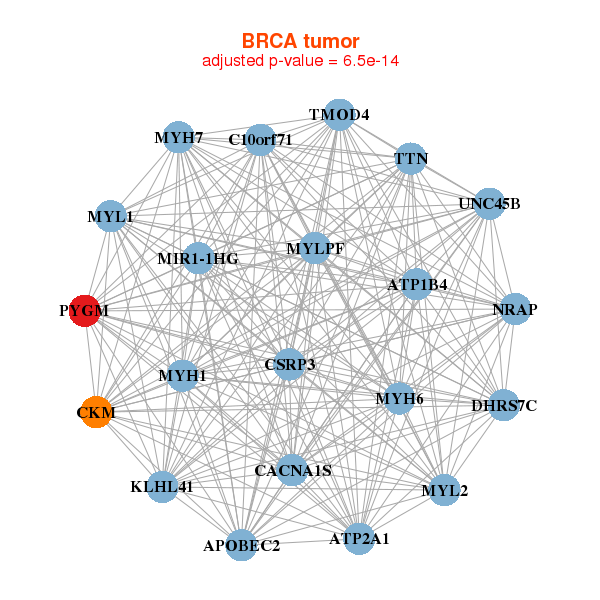 |
| ||||
| APOBEC2,ATP1B4,ATP2A1,C10orf71,MIR1-1HG,CACNA1S,CKM, CSRP3,DHRS7C,KLHL41,MYH1,MYH6,MYH7,MYL1, MYL2,MYLPF,NRAP,PYGM,TMOD4,TTN,UNC45B | ABRA,ACTN2,AGBL1,ASB10,C10orf71,CACNA1S,DHRS7C, ENO3,FBP2,FBXO40,HFE2,LMOD3,MYF6,MYH4, MYL3,MYO18B,MYOT,PYGM,TNNC1,TNNC2,UNC45B | ||||
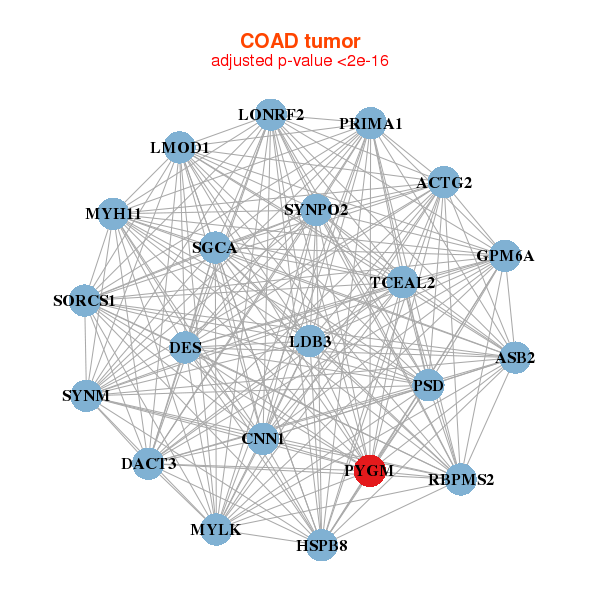 |
| ||||
| ACTG2,ASB2,CNN1,DACT3,DES,GPM6A,HSPB8, LDB3,LMOD1,LONRF2,MYH11,MYLK,PRIMA1,PSD, PYGM,RBPMS2,SGCA,SORCS1,SYNM,SYNPO2,TCEAL2 | ASIC1,ACTN1,AOC3,ATP1A2,BVES,CPXM2,CTXN1, DACT3,FLNA,KCNH2,KY,LDB3,NPTXR,PDLIM7, PLCD4,PNCK,PYGM,SLC2A4,SLC8A2,SMTN,TGFB1I1 |
| * Co-Expression network figures were drawn using R package igraph. Only the top 20 genes with the highest correlations were shown. Red circle: input gene, orange circle: cell metabolism gene, sky circle: other gene |
: Open all plots for all cancer types
| Top |
: Open all interacting genes' information including KEGG pathway for all interacting genes from DAVID
| Top |
| Pharmacological Information for PYGM |
| DB Category | DB Name | DB's ID and Url link |
| * Gene Centered Interaction Network. |
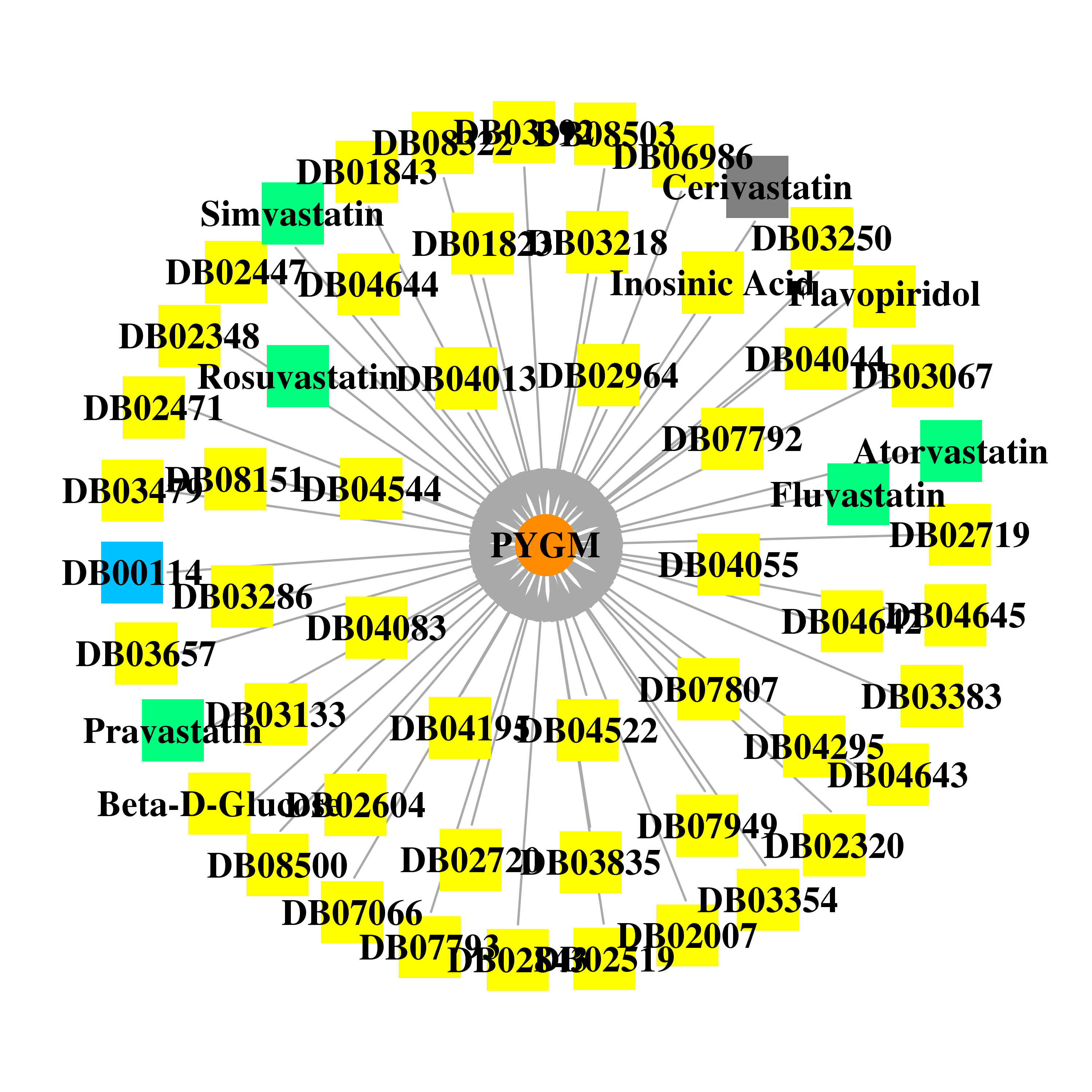 |
| * Drug Centered Interaction Network. |
| DrugBank ID | Target Name | Drug Groups | Generic Name | Drug Centered Network | Drug Structure |
| DB00114 | phosphorylase, glycogen, muscle | nutraceutical | Pyridoxal Phosphate | 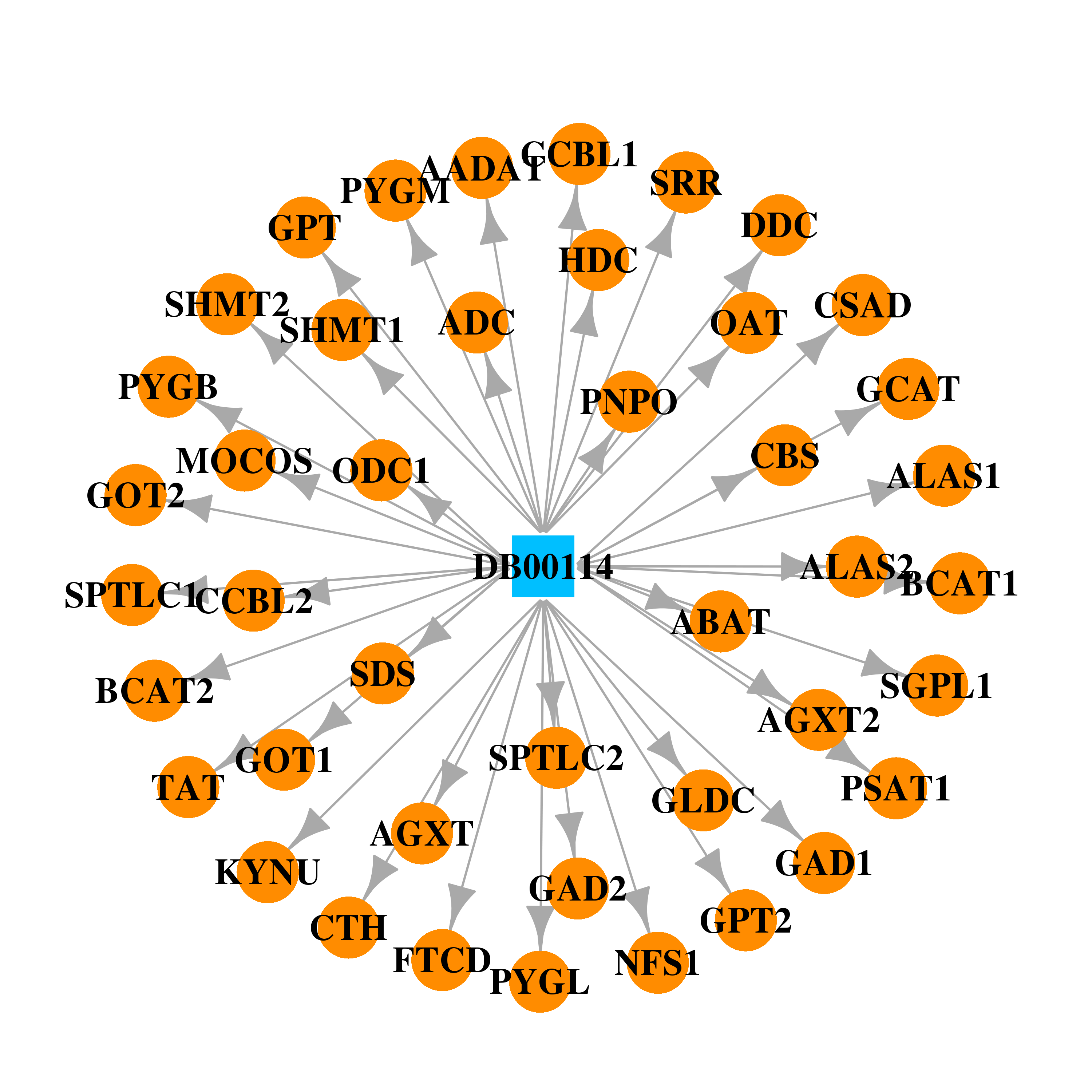 | 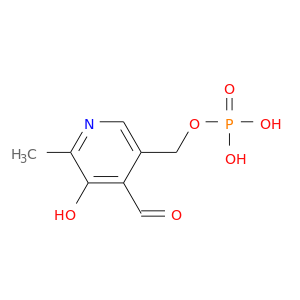 |
| DB01823 | phosphorylase, glycogen, muscle | experimental | Beta-D-Glucopyranose Spirohydantoin |  | 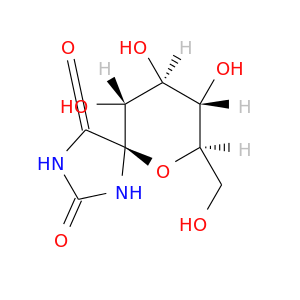 |
| DB01843 | phosphorylase, glycogen, muscle | experimental | 3-Amino-8,9,10-Trihydroxy-7-Hydroxymethyl-6-Oxa-1,3-Diaza-Spiro[4.5]Decane-2,4-Dione | 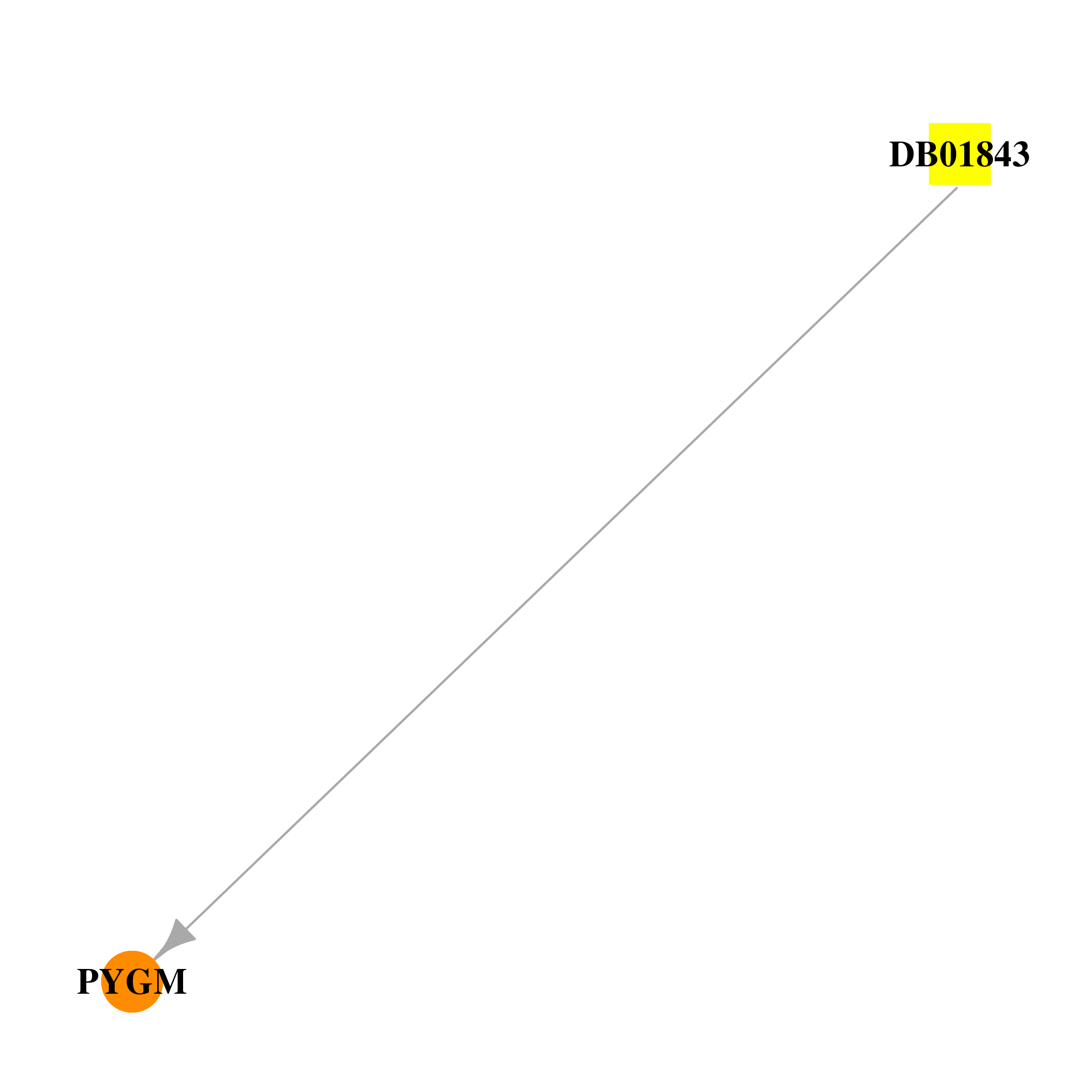 | 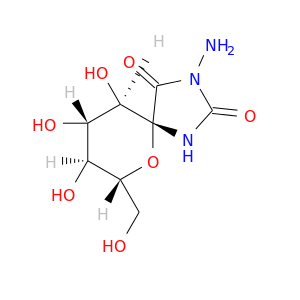 |
| DB02007 | phosphorylase, glycogen, muscle | experimental | Alpha-D-Glucose-6-Phosphate |  | 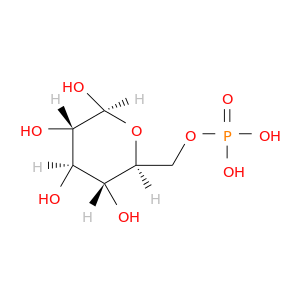 |
| DB02320 | phosphorylase, glycogen, muscle | experimental | 1-N-Acetyl-Beta-D-Glucosamine | 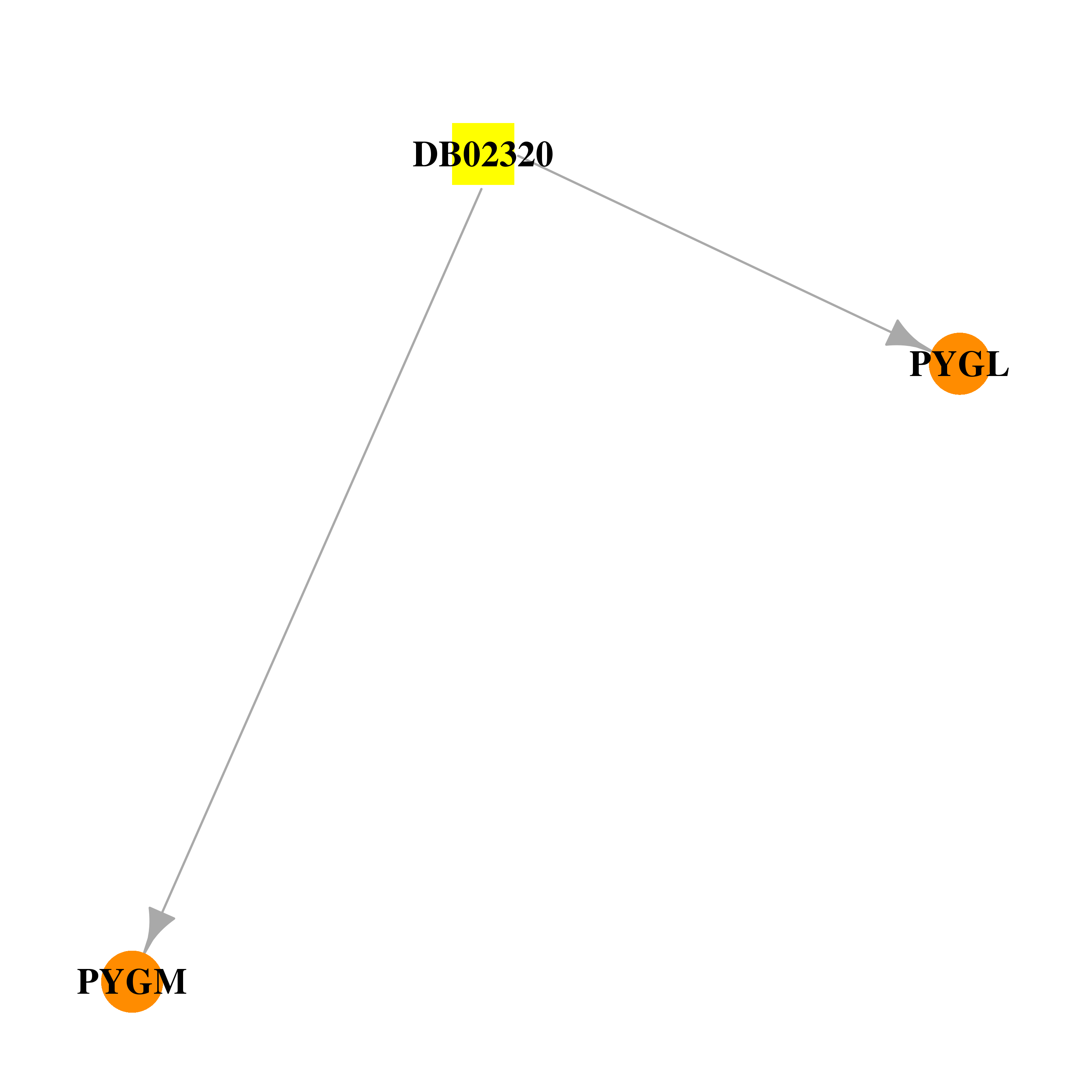 | 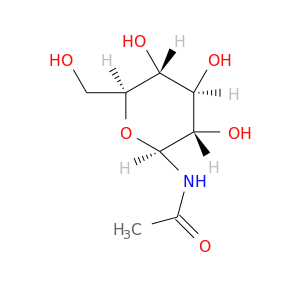 |
| DB02348 | phosphorylase, glycogen, muscle | experimental | Fluoro-Phosphite Ion | 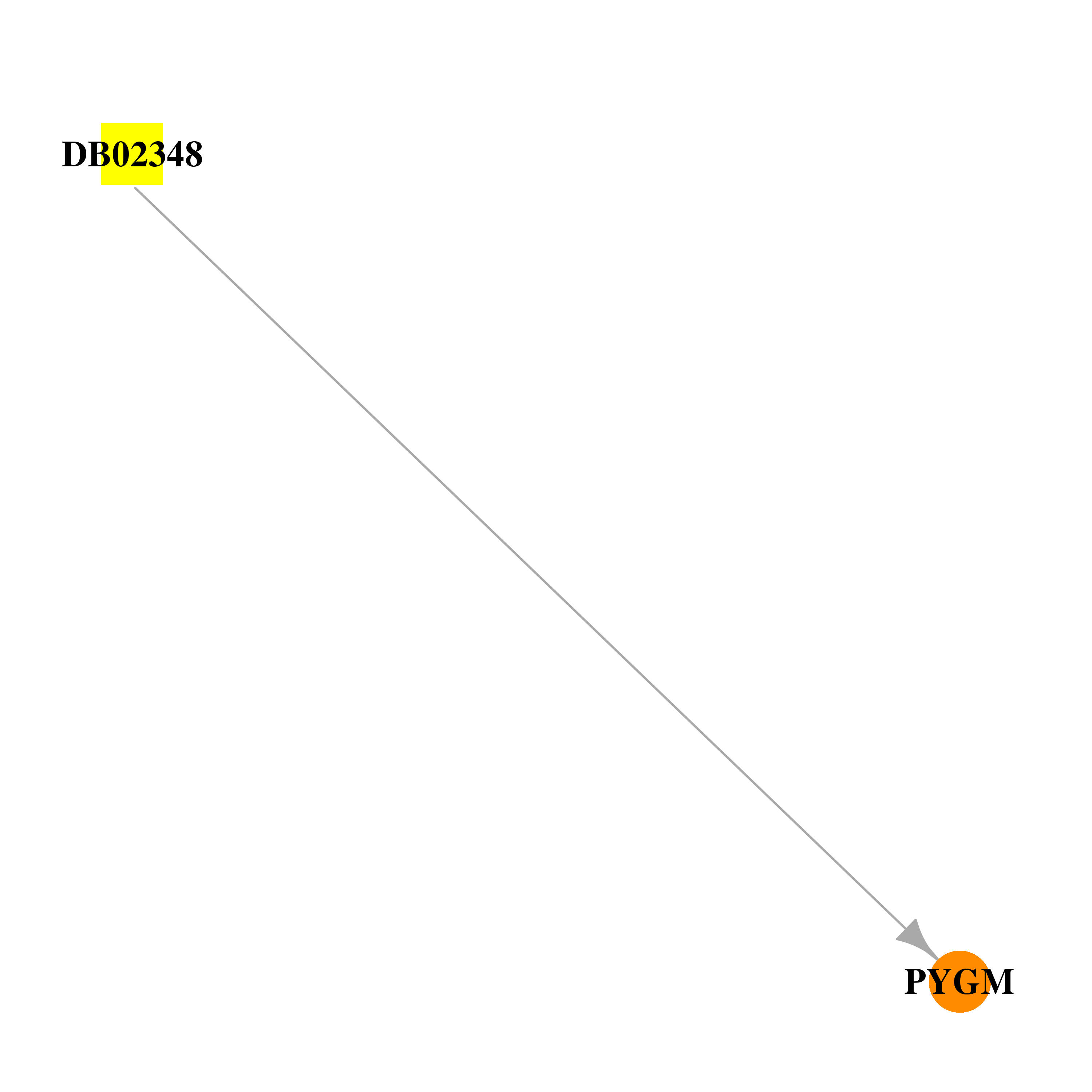 | 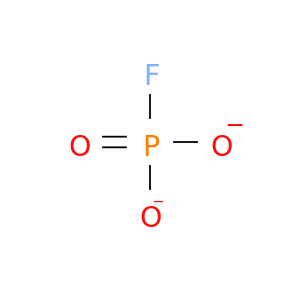 |
| DB02379 | phosphorylase, glycogen, muscle | experimental | Beta-D-Glucose | 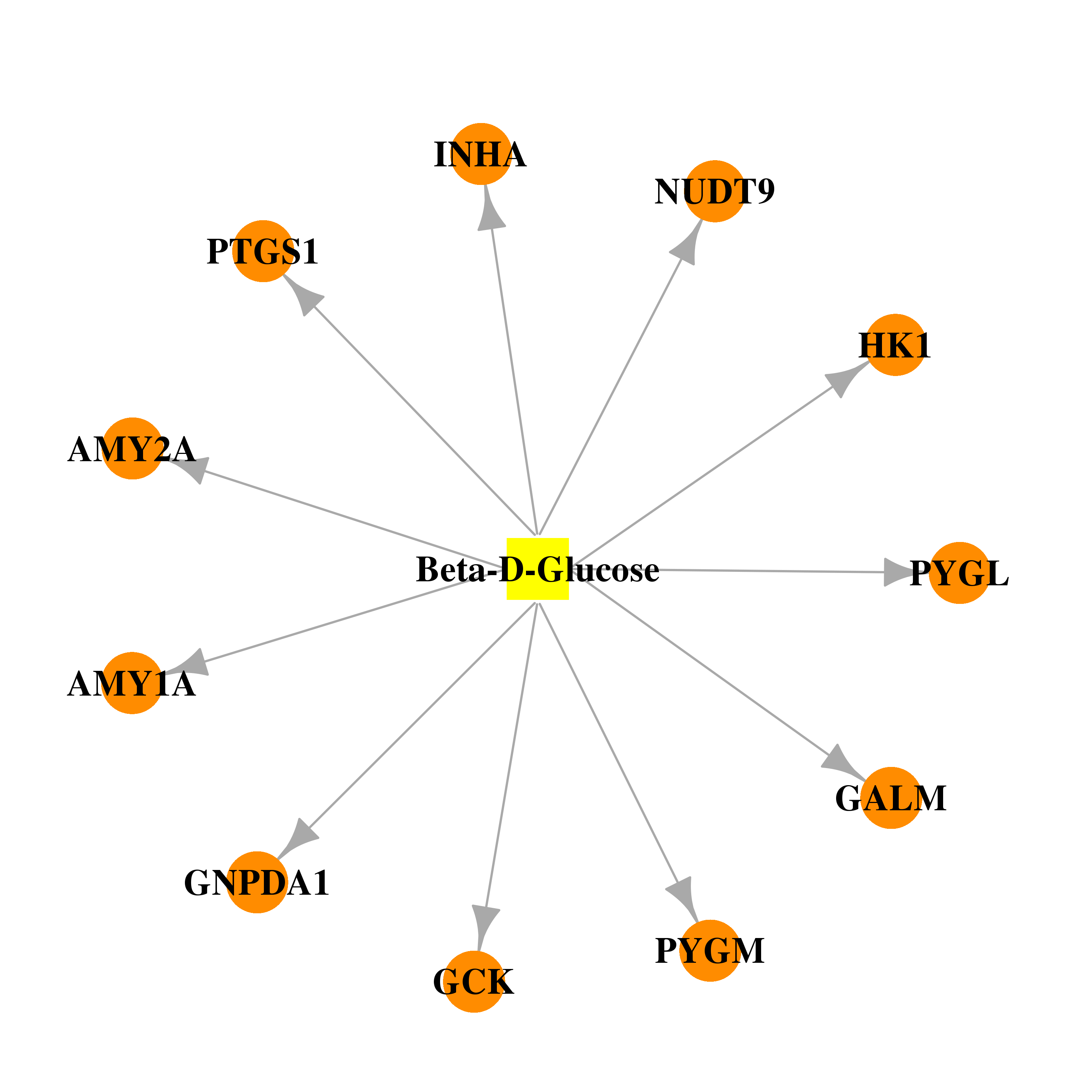 | 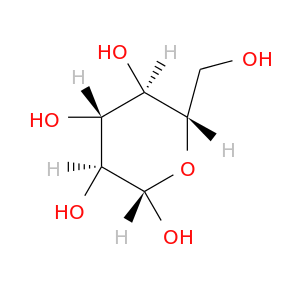 |
| DB02447 | phosphorylase, glycogen, muscle | experimental | 3,8,9,10-Tetrahydroxy-7-Hydroxymethyl-6-Oxa-1,3-Diaza-Spiro[4.5]Decane-2,4-Dione | 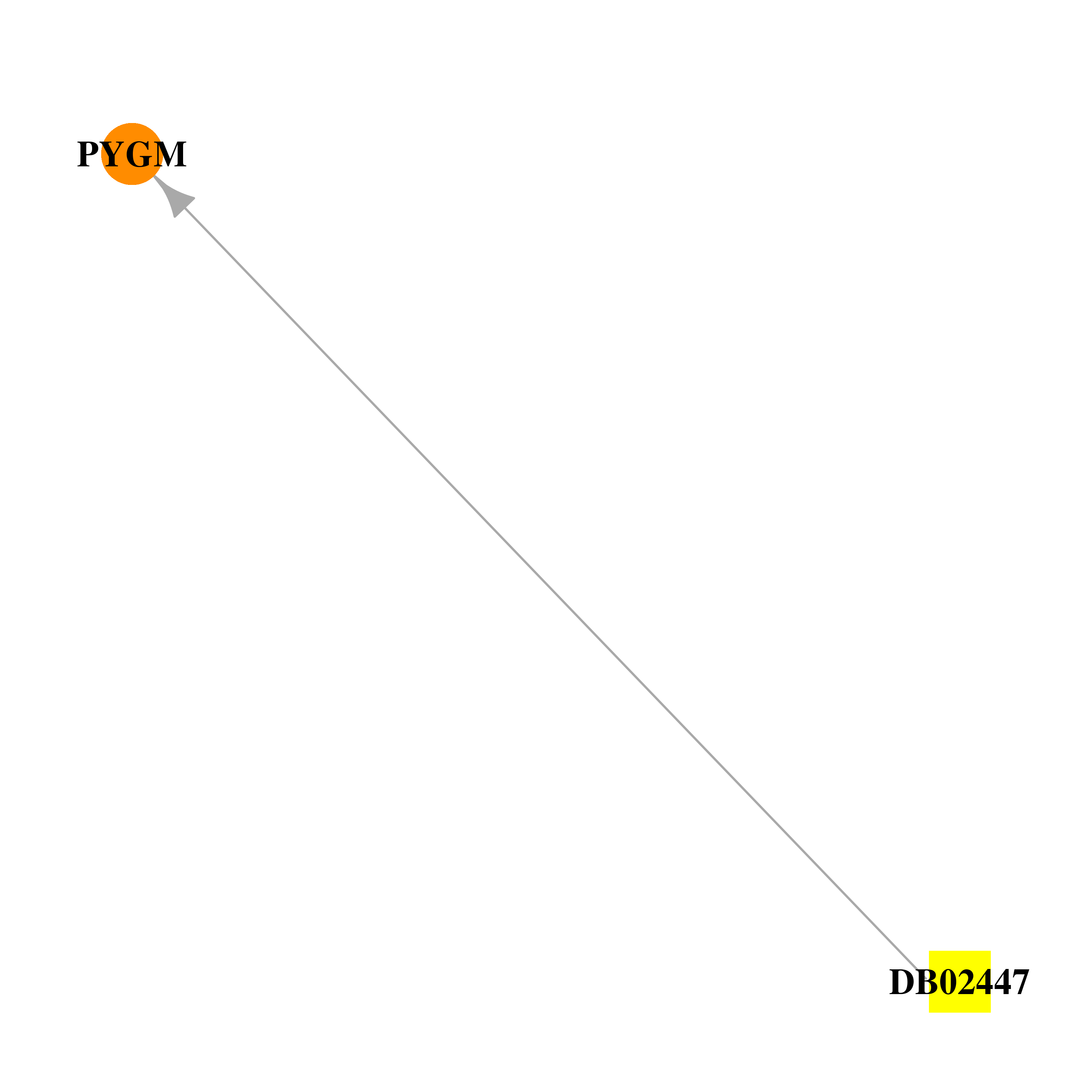 | 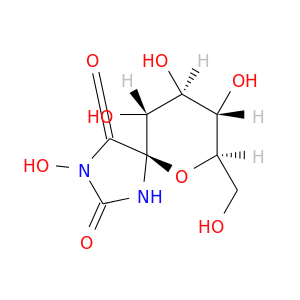 |
| DB02471 | phosphorylase, glycogen, muscle | experimental | Nojirimycine Tetrazole | 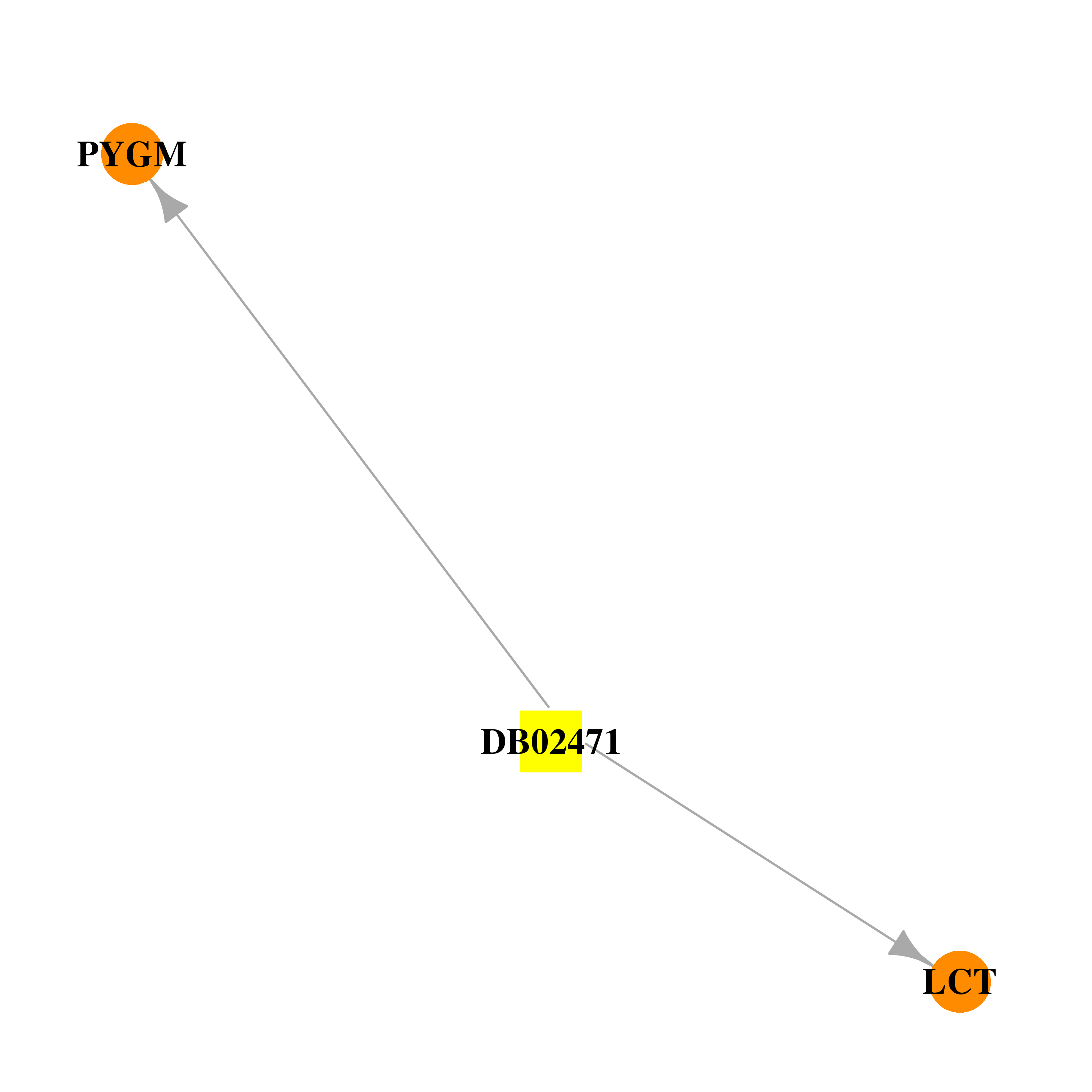 | 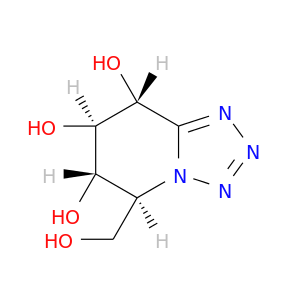 |
| DB02519 | phosphorylase, glycogen, muscle | experimental | Indirubin-5-Sulphonate | 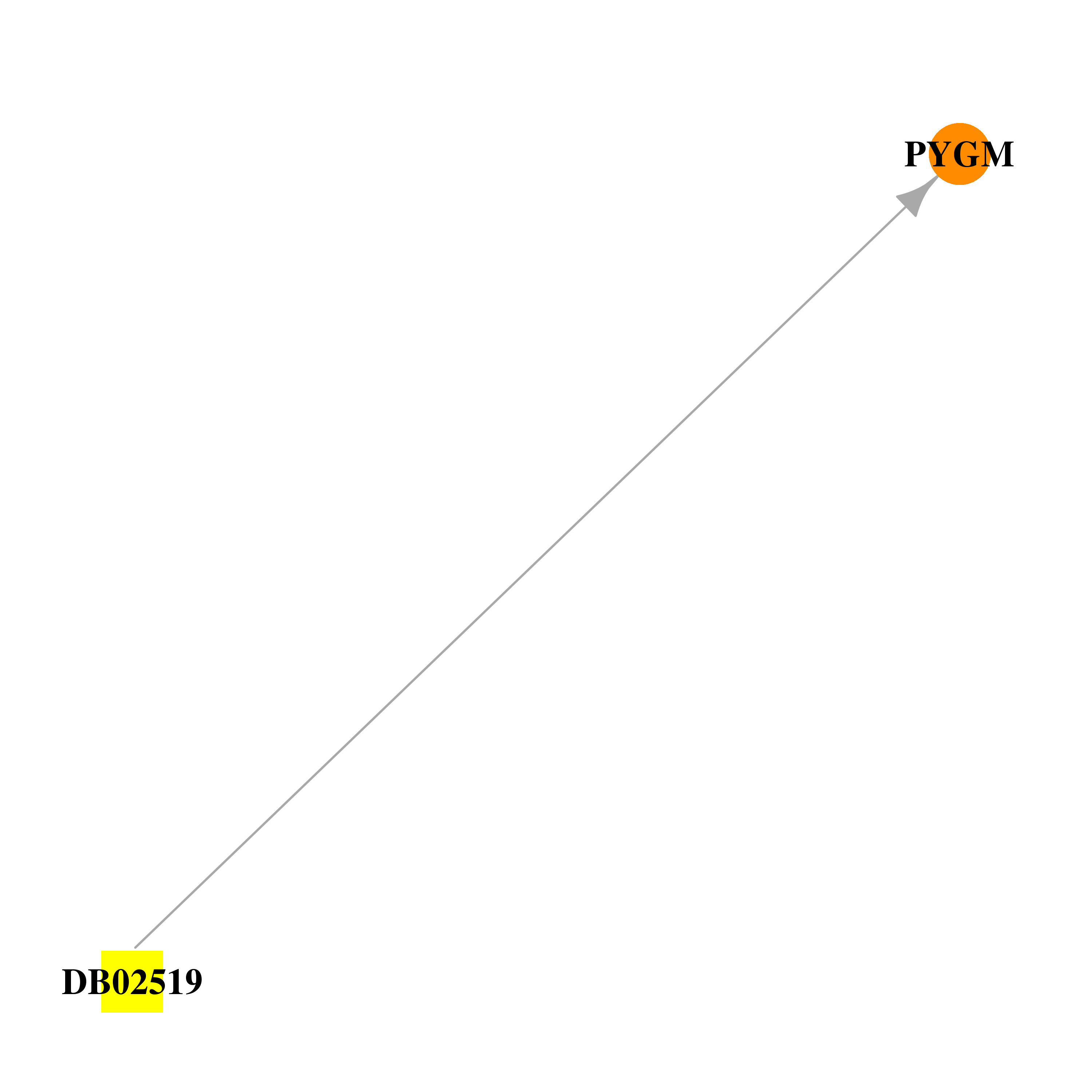 | 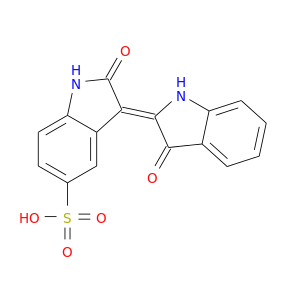 |
| DB02604 | phosphorylase, glycogen, muscle | experimental | 2-Deoxy-Glucose-6-Phosphate | 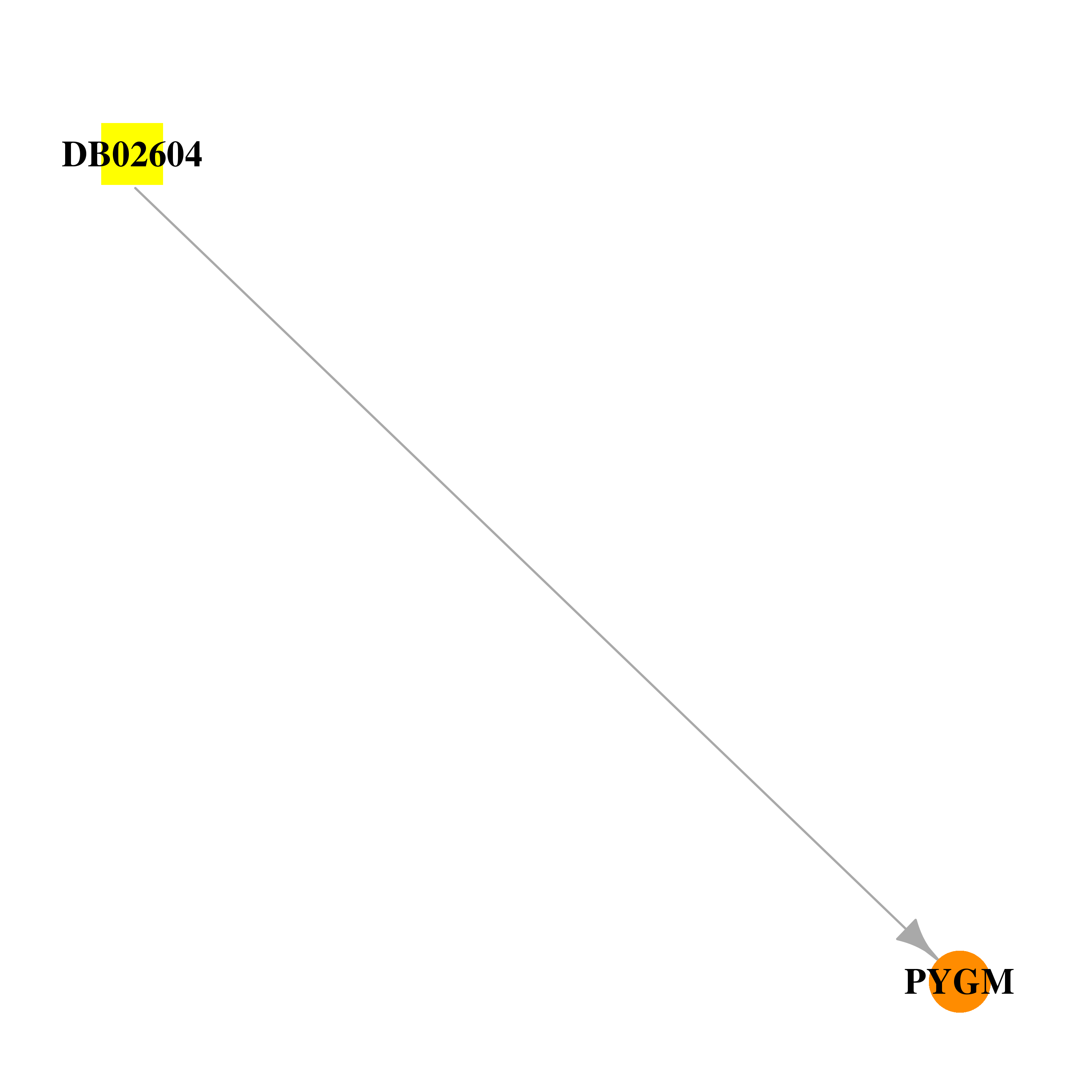 | 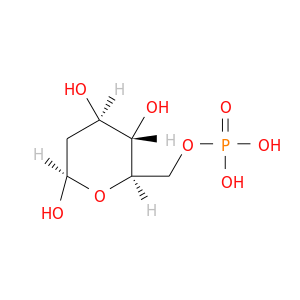 |
| DB02719 | phosphorylase, glycogen, muscle | experimental | C-(1-Hydrogyl-Beta-D-Glucopyranosyl) Formamide | 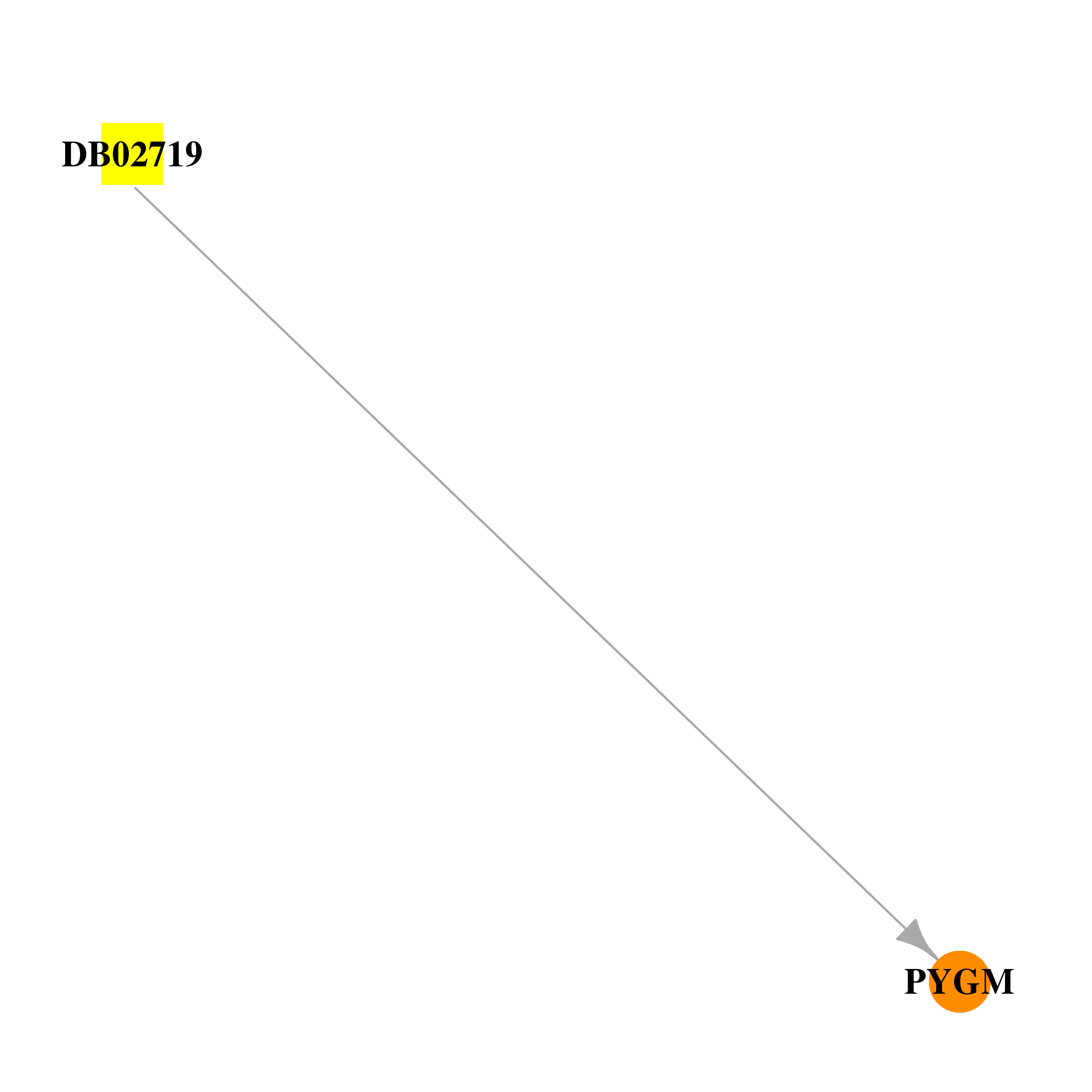 |  |
| DB02720 | phosphorylase, glycogen, muscle | experimental | Alpha-D-Glucopyranosyl-2-Carboxylic Acid Amide |  | 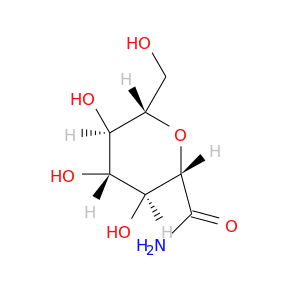 |
| DB02843 | phosphorylase, glycogen, muscle | experimental | Alpha-D-Glucose-1-Phosphate | 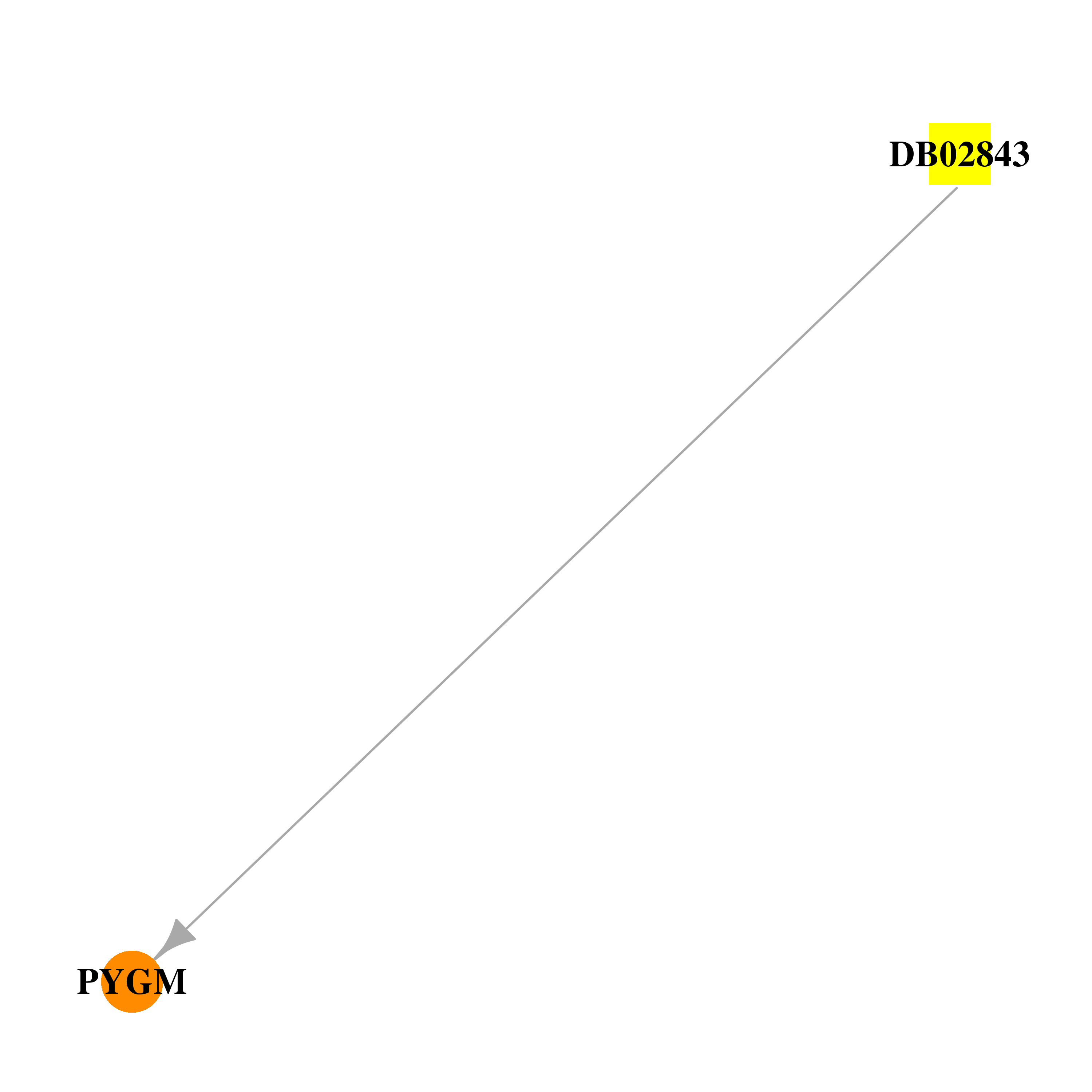 | 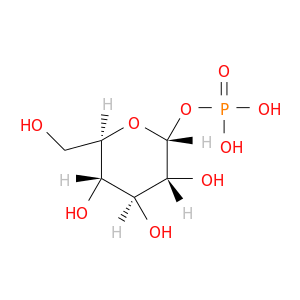 |
| DB02964 | phosphorylase, glycogen, muscle | experimental | 8,9,10-Trihydroxy-7-Hydroxymethyl-2-Thioxo-6-Oxa-1,3-Diaza-Spiro[4.5]Decan-4-One | 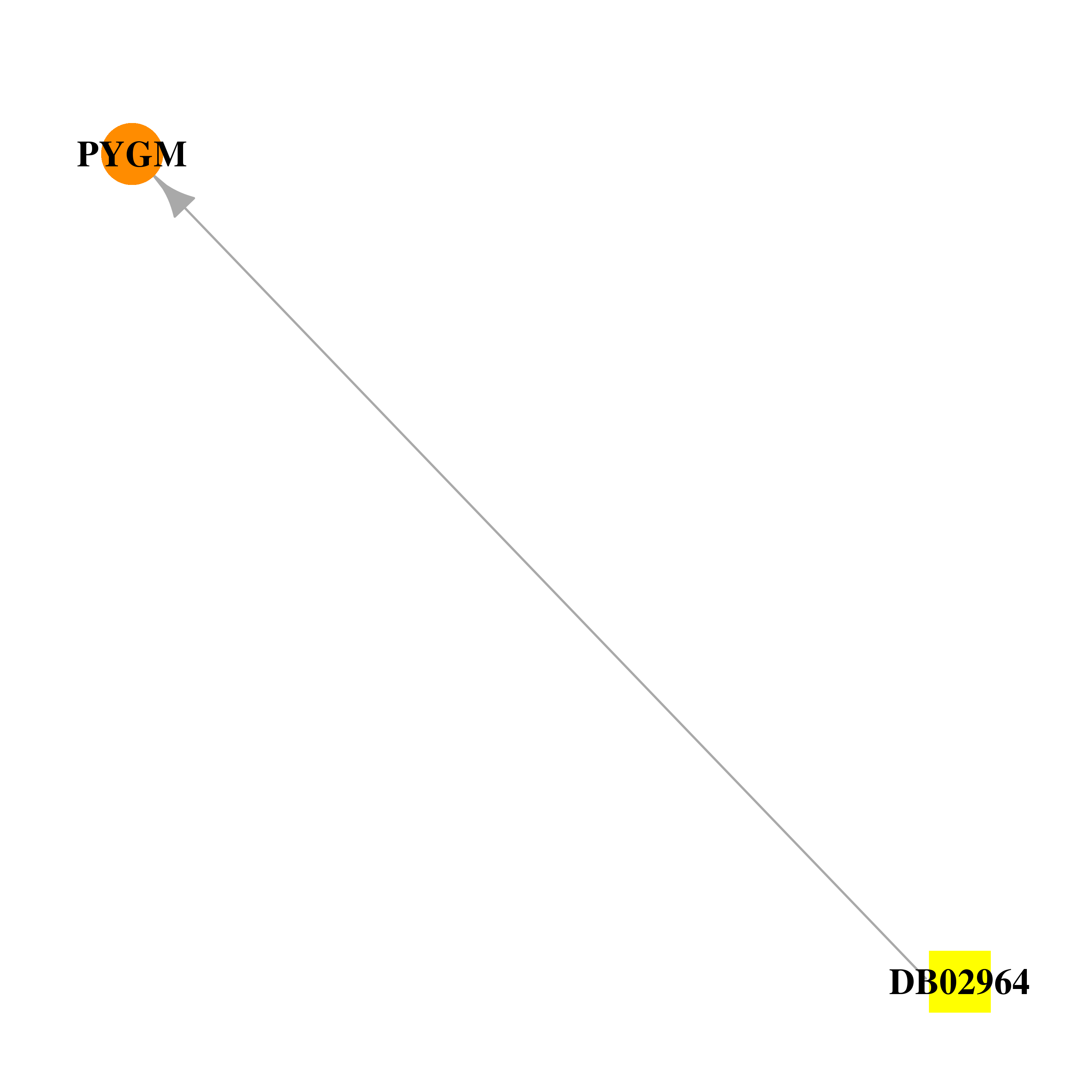 | 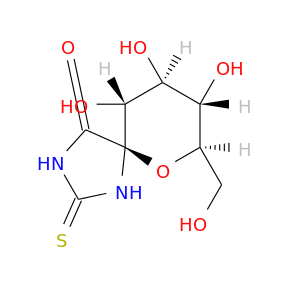 |
| DB03067 | phosphorylase, glycogen, muscle | experimental | 4-{2,4-Bis[(3-Nitrobenzoyl)Amino]Phenoxy}Phthalic Acid | 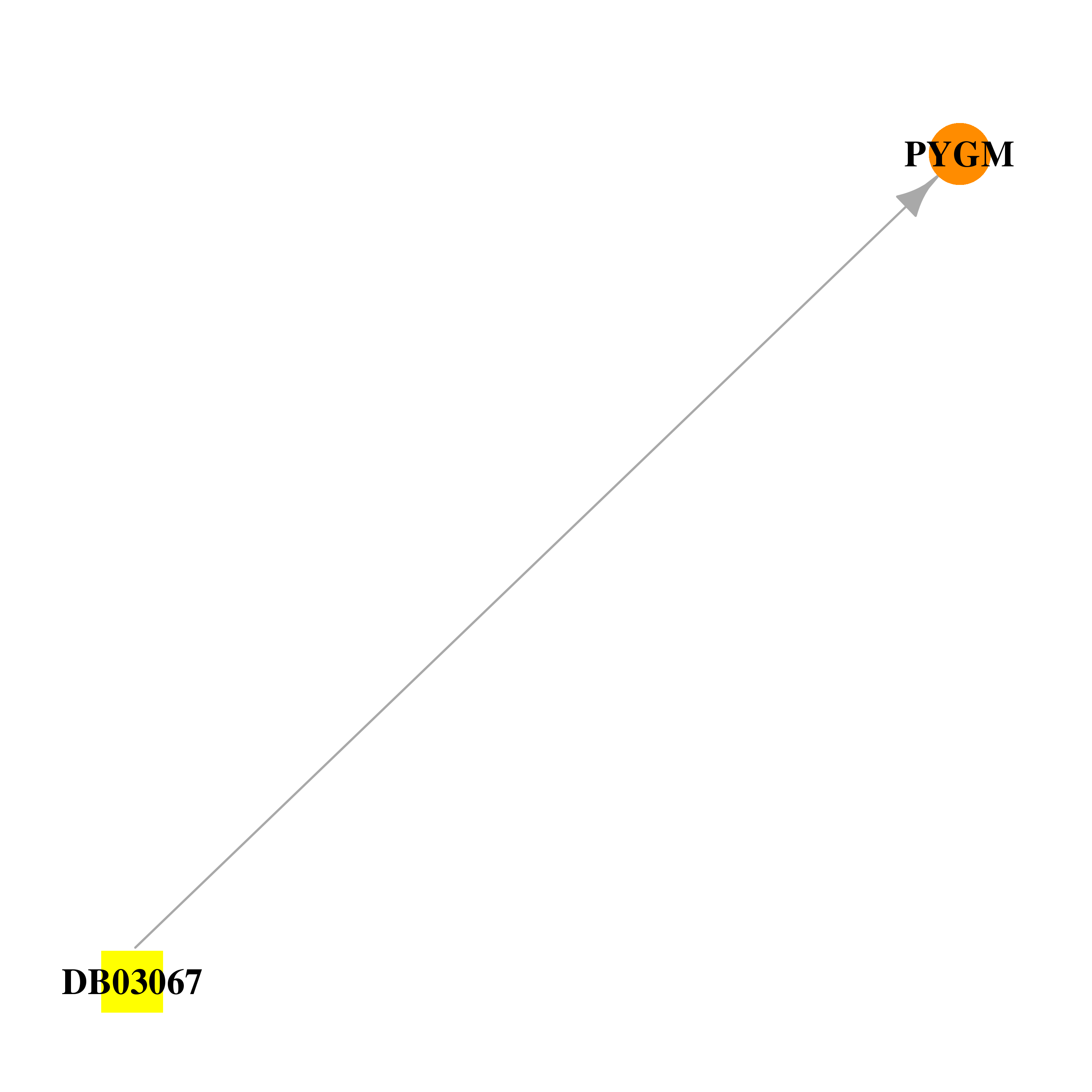 | 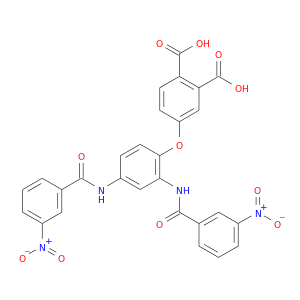 |
| DB03133 | phosphorylase, glycogen, muscle | experimental | 2-(Beta-D-Glucopyranosyl)-5-Methyl-1,2,3-Benzimidazole | 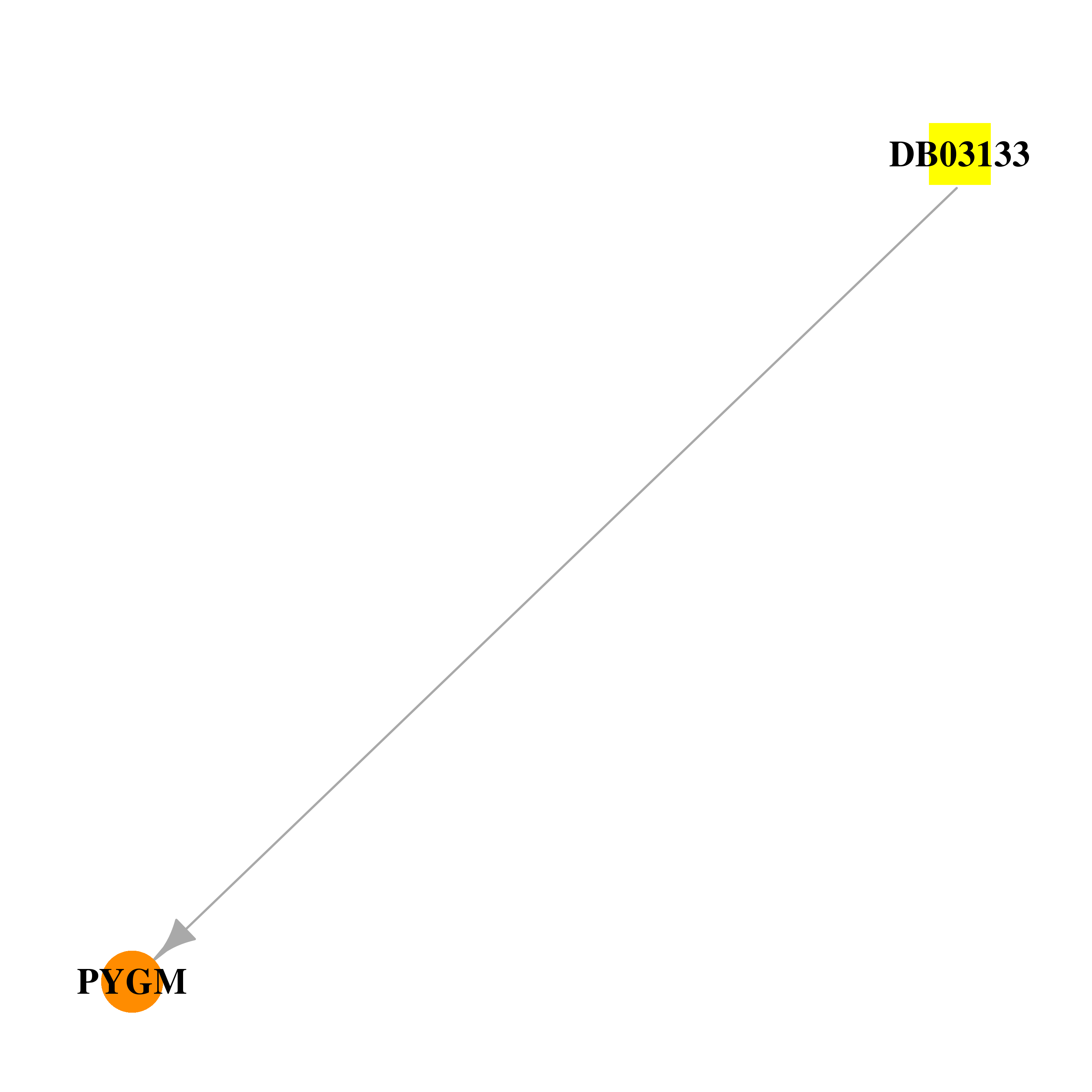 | 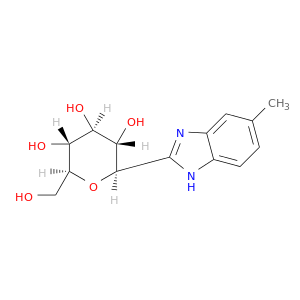 |
| DB03218 | phosphorylase, glycogen, muscle | experimental | N-Acetyl-N'-Beta-D-Glucopyranosyl Urea | 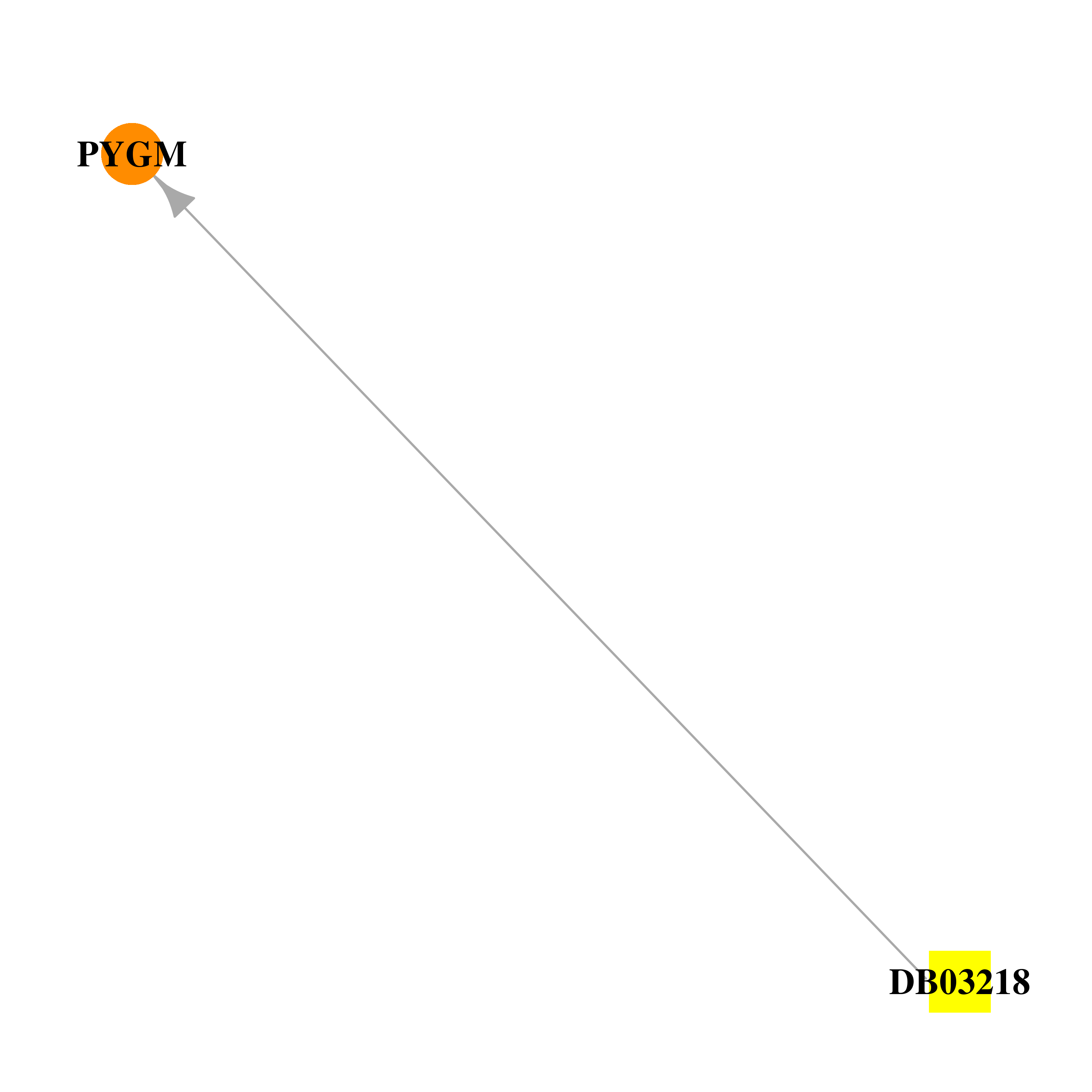 | 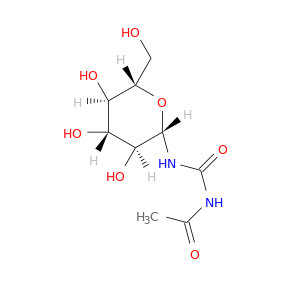 |
| DB03250 | phosphorylase, glycogen, muscle | experimental | 2-(Beta-D-Glucopyranosyl)-5-Methyl-1,3,4-Benzothiazole |  | 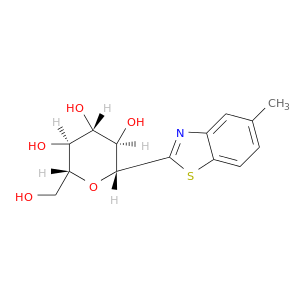 |
| DB03286 | phosphorylase, glycogen, muscle | experimental | C-(1-Azido-Alpha-D-Glucopyranosyl) Formamide | 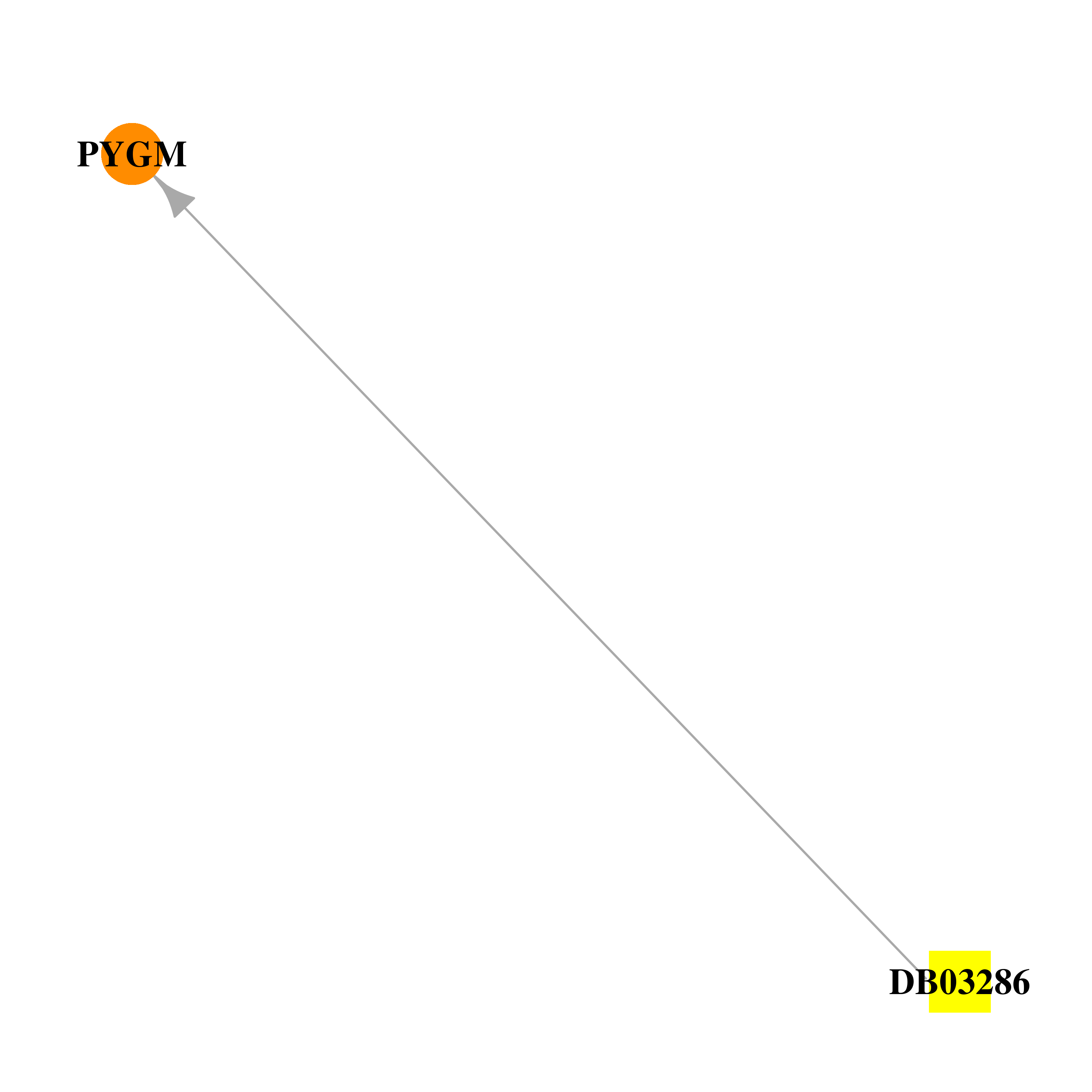 |  |
| DB03354 | phosphorylase, glycogen, muscle | experimental | 2-(Beta-D-Glucopyranosyl)-5-Methyl-1,3,4-Oxadiazole | 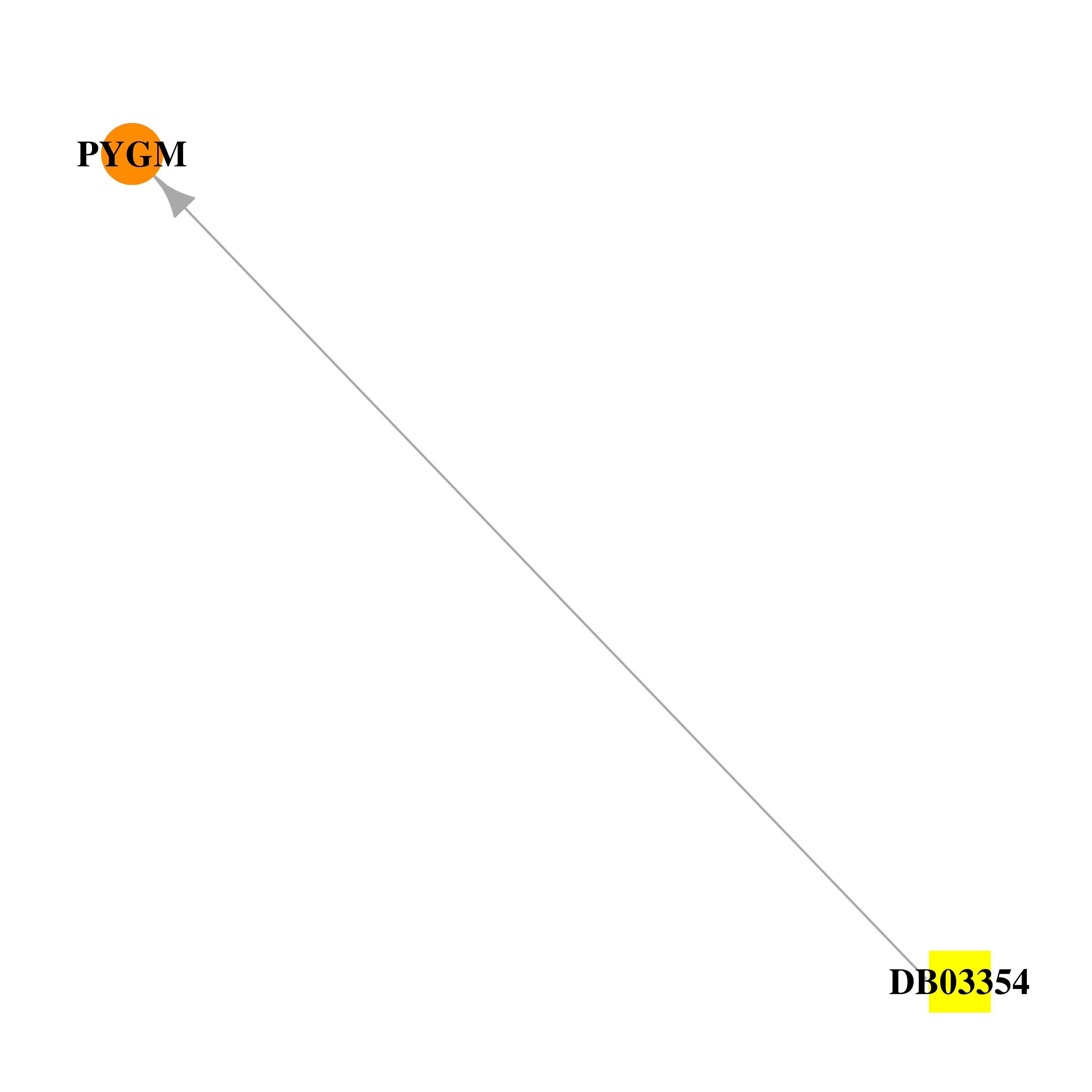 | 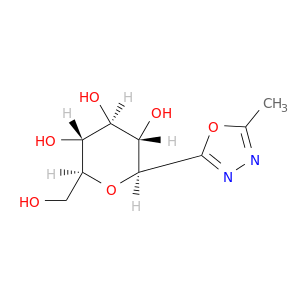 |
| DB03383 | phosphorylase, glycogen, muscle | experimental | 5-Chloro-1h-Indole-2-Carboxylic Acid [1-(4-Fluorobenzyl)-2-(4-Hydroxypiperidin-1yl)-2-Oxoethyl]Amide | 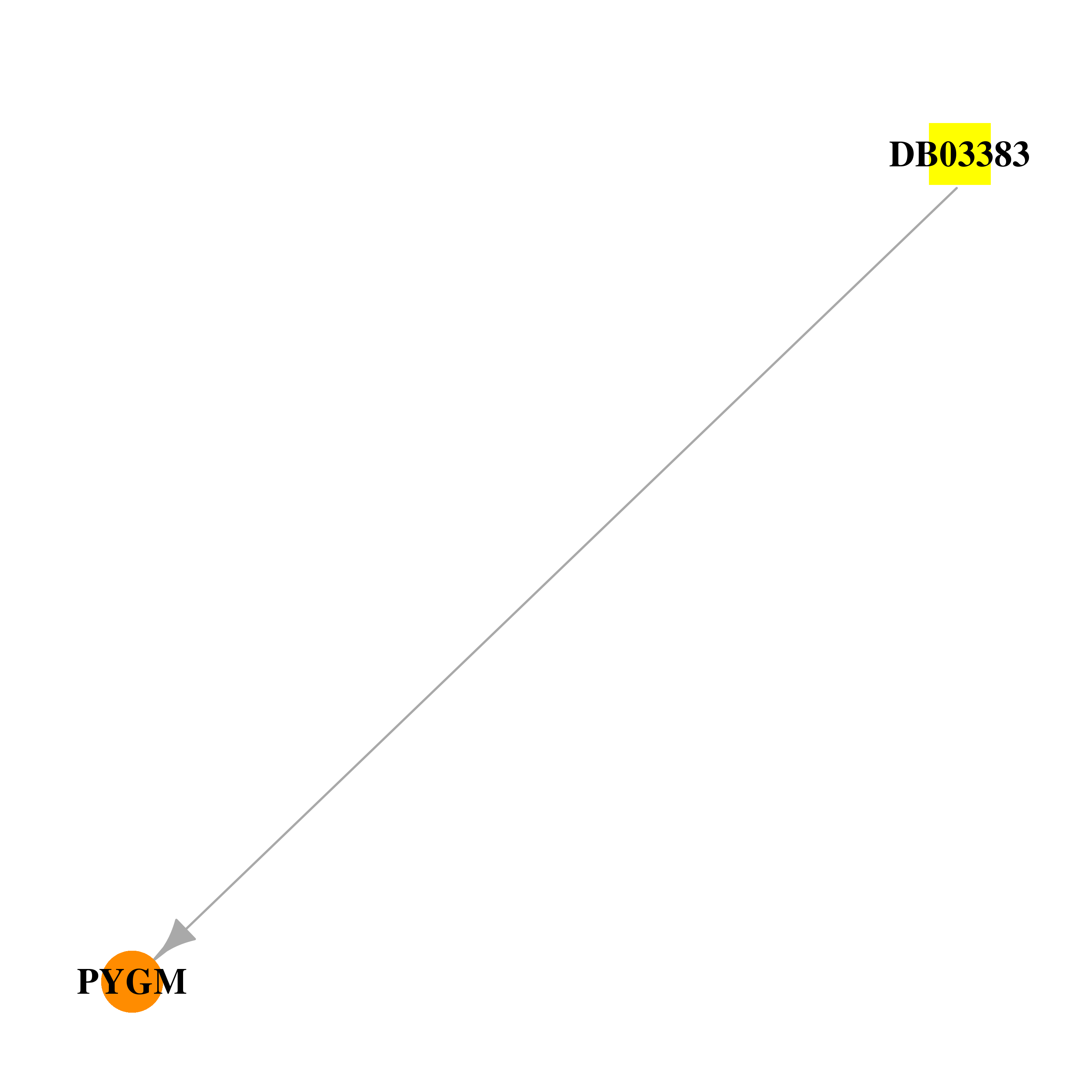 | 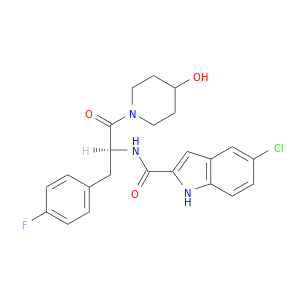 |
| DB03392 | phosphorylase, glycogen, muscle | experimental | (3,4,5-Trihydroxy-6-Hydroxymethyl-Tetrahydro-Pyran-2-Yl)-Phosphoramidic Acid Dimethyl Ester |  | 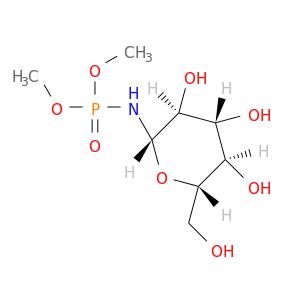 |
| DB03479 | phosphorylase, glycogen, muscle | experimental | 8,9,10-Trihydroxy-7-Hydroxymethyl-3-Methyl-6-Oxa-1,3-Diaza-Spiro[4.5]Decane-2,4-Dione |  | 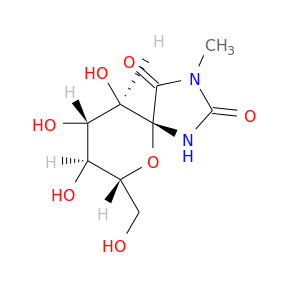 |
| DB03496 | phosphorylase, glycogen, muscle | experimental; investigational | Flavopiridol | 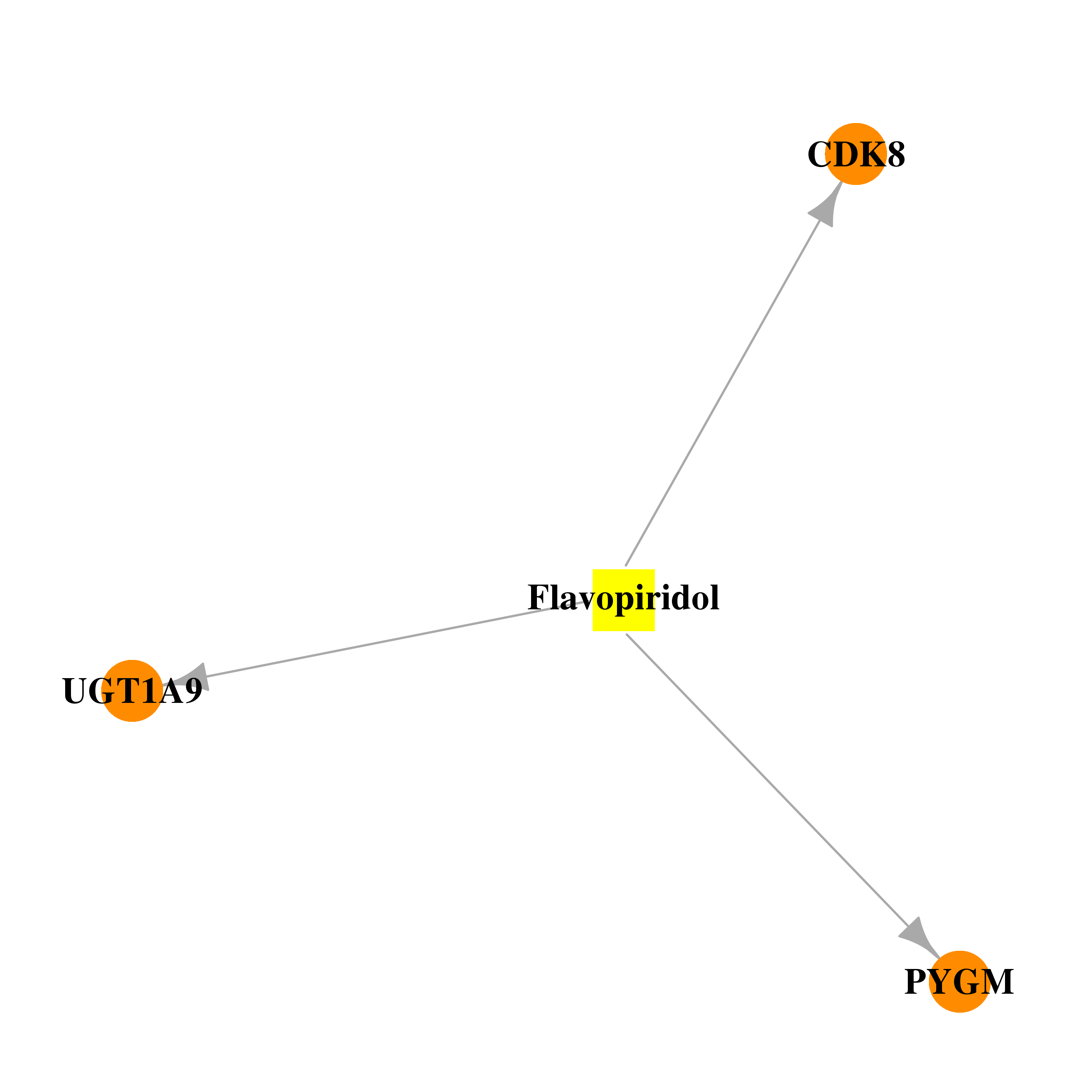 | 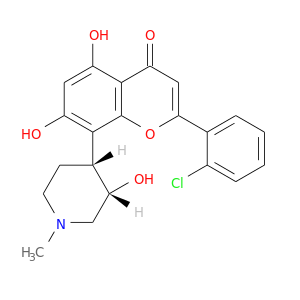 |
| DB03657 | phosphorylase, glycogen, muscle | experimental | 1-Deoxy-1-Methoxycarbamido-Beta-D-Glucopyranose |  | 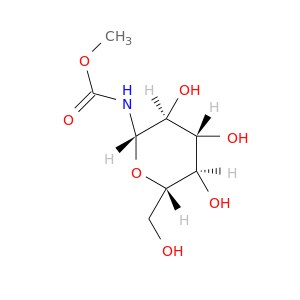 |
| DB03835 | phosphorylase, glycogen, muscle | experimental | N-(8,9,10-Trihydroxy-7-Hydroxymethyl-2,4-Dioxo-6-Oxa-1,3-Diaza-Spiro[4.5]Dec-3-Yl-Acetamide |  |  |
| DB04013 | phosphorylase, glycogen, muscle | experimental | 1-Deoxy-1-Methoxycarbamido-Beta-D-Gluco-2-Heptulopyranosonamide | 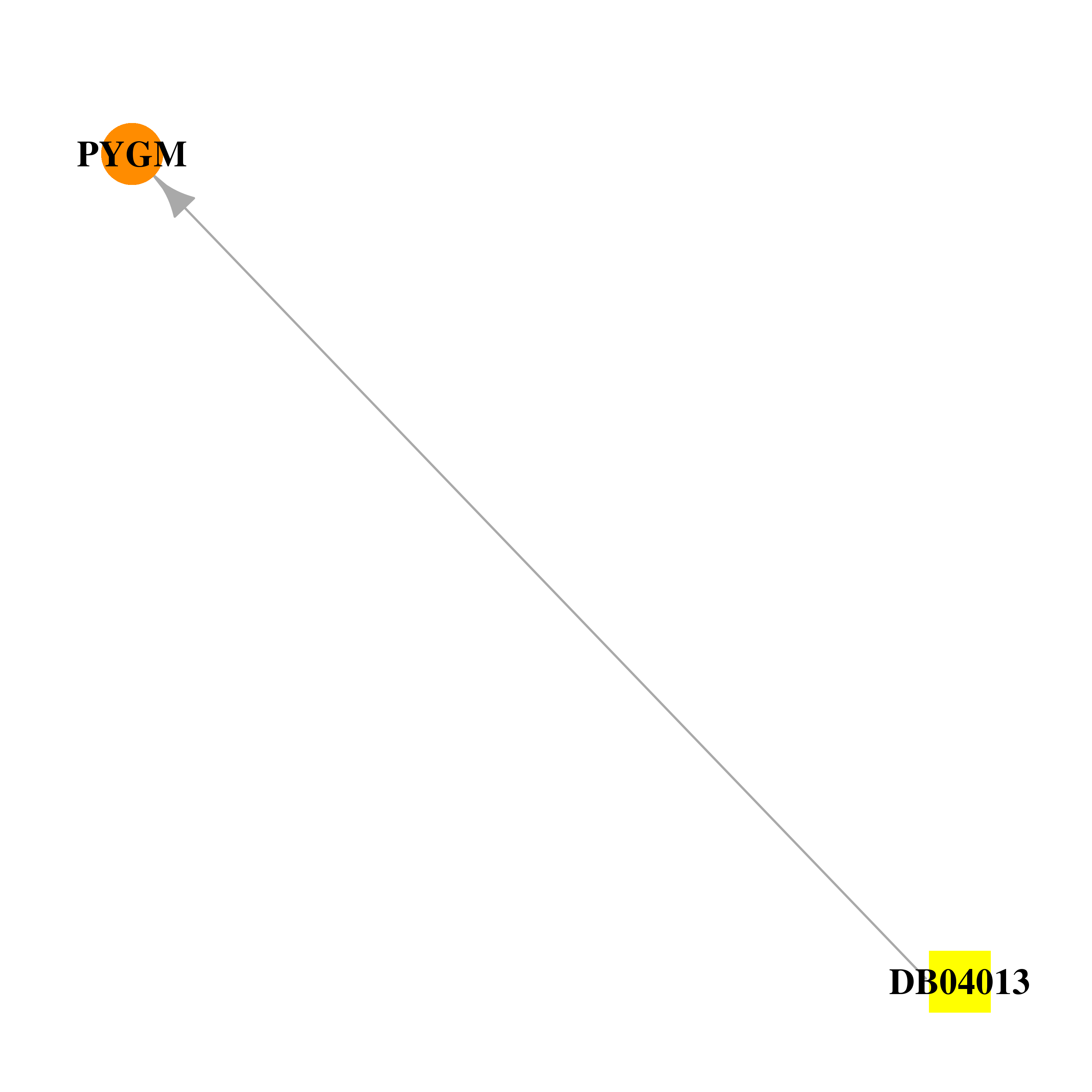 | 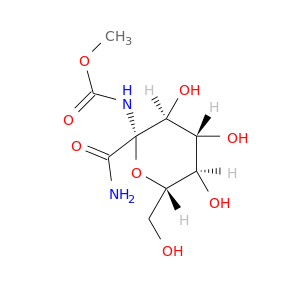 |
| DB04044 | phosphorylase, glycogen, muscle | experimental | 4-{2-[(3-Nitrobenzoyl)Amino]Phenoxy}Phthalic Acid |  | 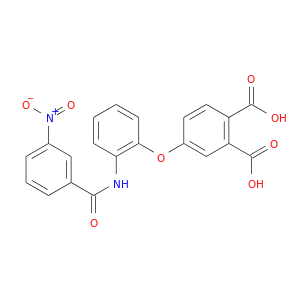 |
| DB04055 | phosphorylase, glycogen, muscle | experimental | 2,3-Dicarboxy-4-(2-Chloro-Phenyl)-1-Ethyl-5-Isopropoxycarbonyl-6-Methyl-Pyridinium |  | 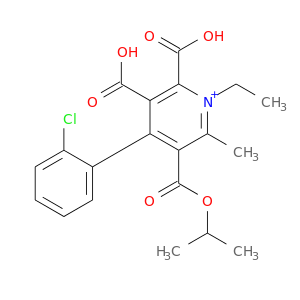 |
| DB04083 | phosphorylase, glycogen, muscle | experimental | N'-Pyridoxyl-Lysine-5'-Monophosphate | 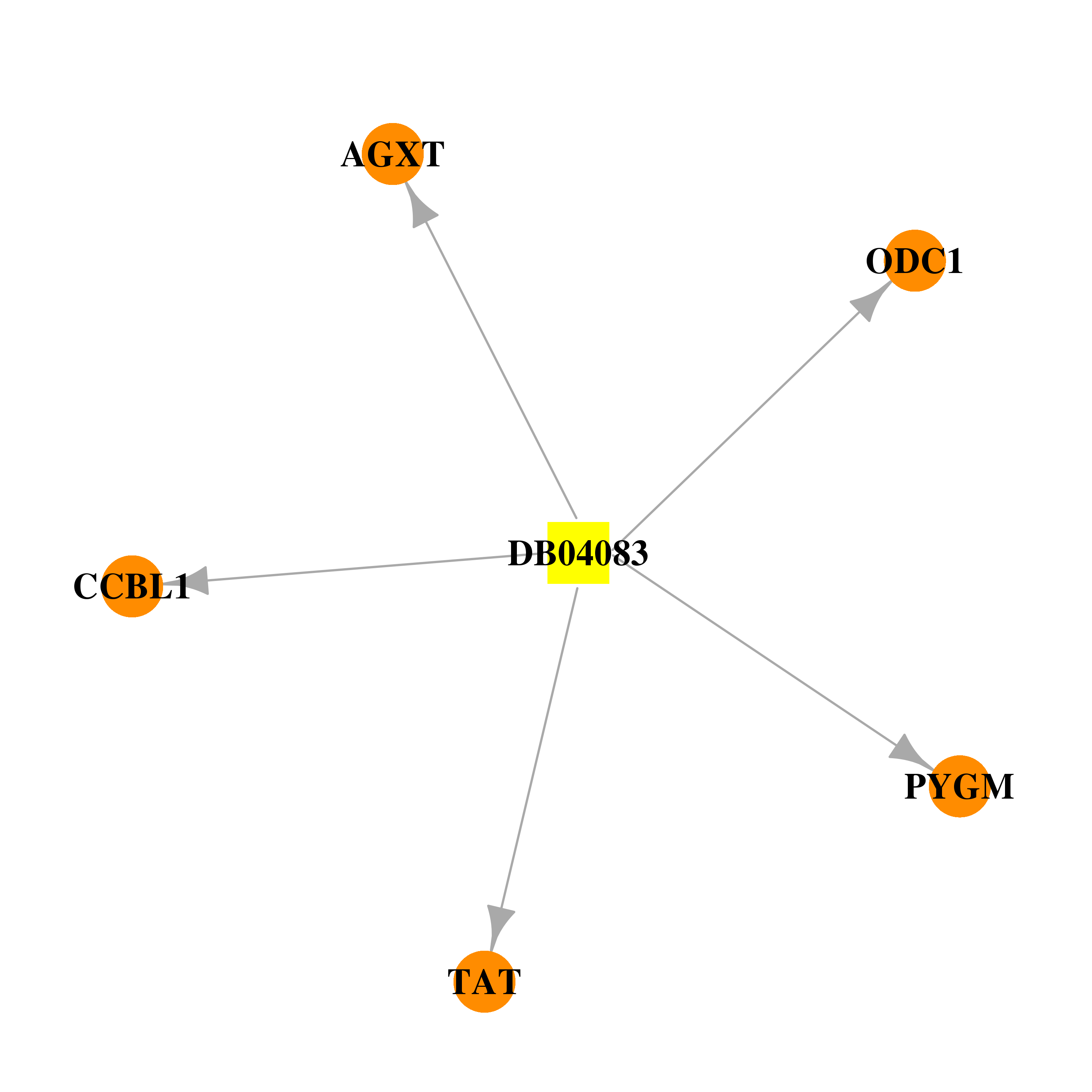 |  |
| DB04195 | phosphorylase, glycogen, muscle | experimental | Heptulose-2-Phosphate | 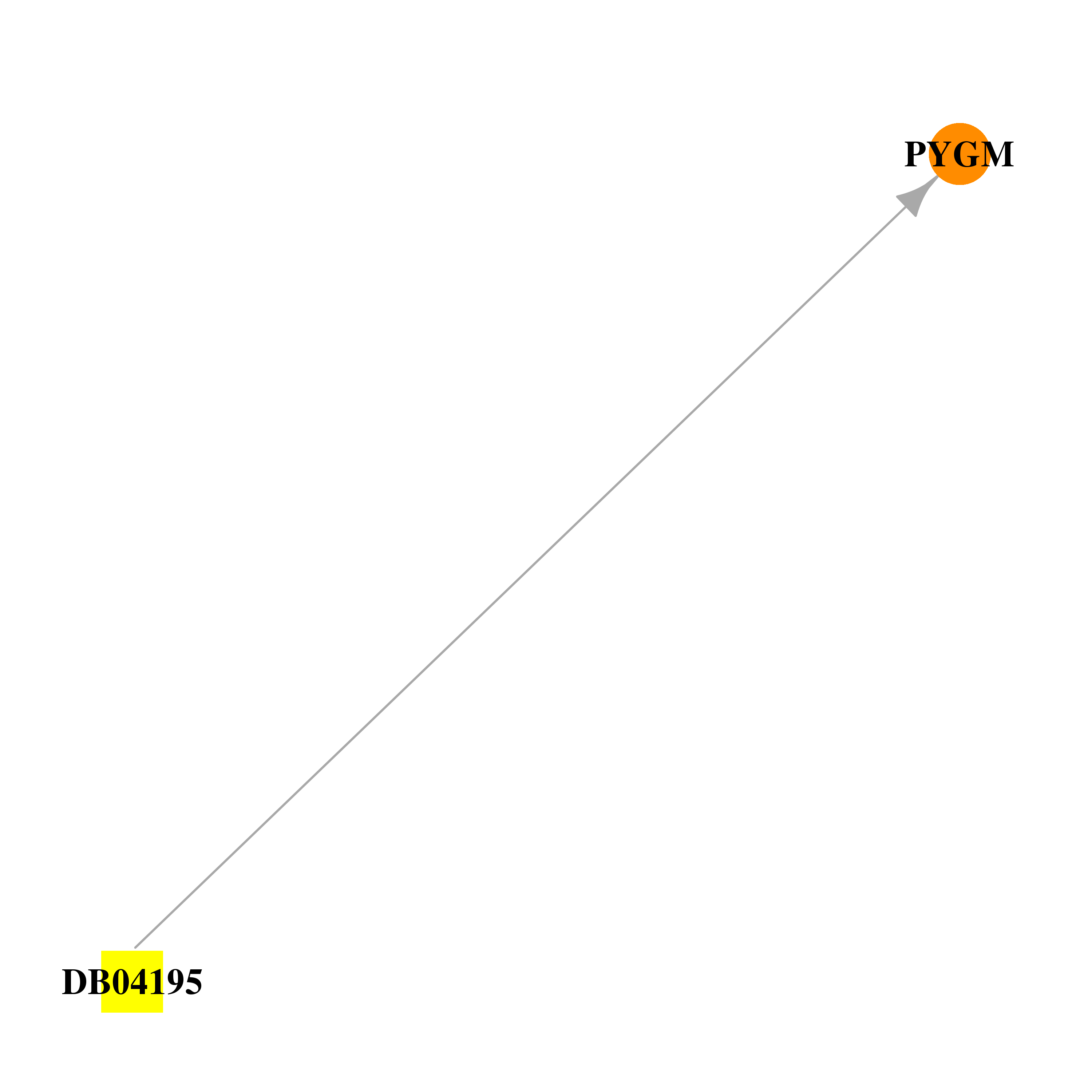 | 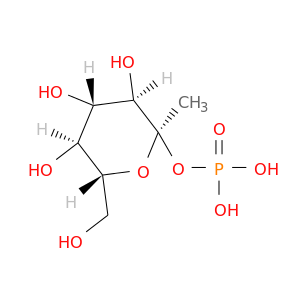 |
| DB04295 | phosphorylase, glycogen, muscle | experimental | N-Benzoyl-N'-Beta-D-Glucopyranosyl Urea | 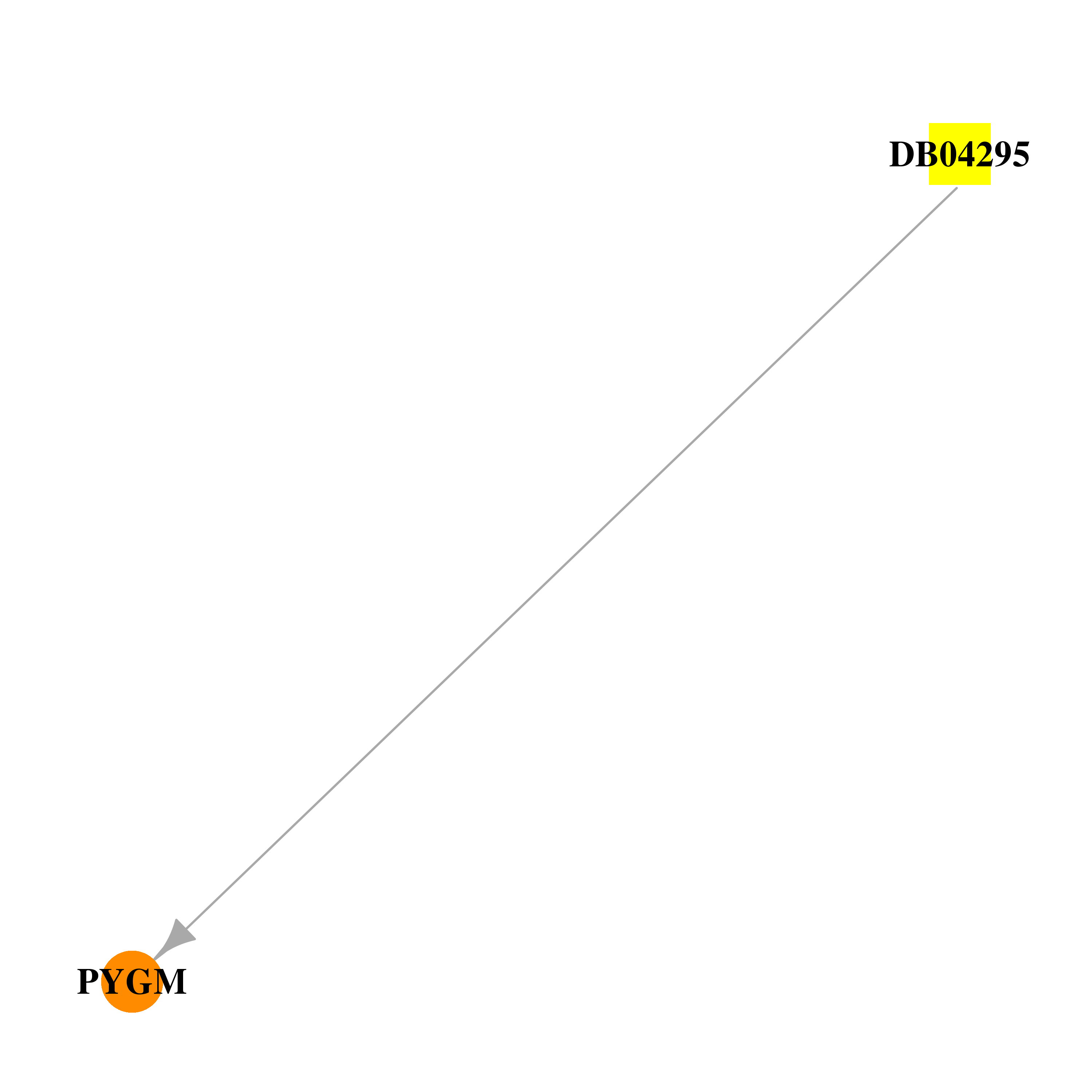 | 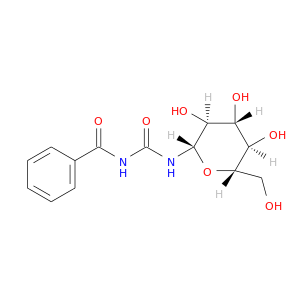 |
| DB04522 | phosphorylase, glycogen, muscle | experimental | Phosphonoserine | 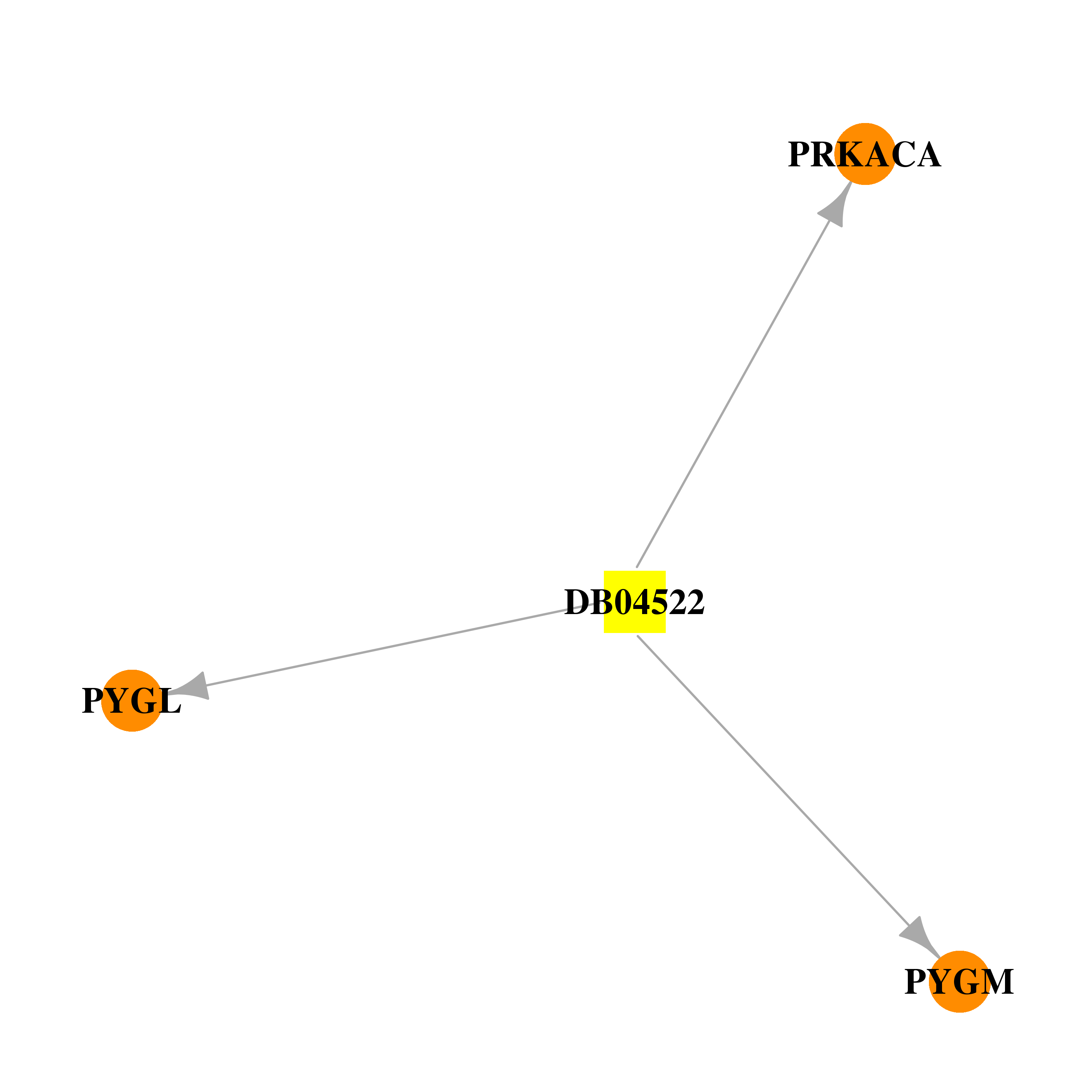 |  |
| DB04544 | phosphorylase, glycogen, muscle | experimental | 1-Deoxy-1-Acetylamino-Beta-D-Gluco-2-Heptulopyranosonamide | 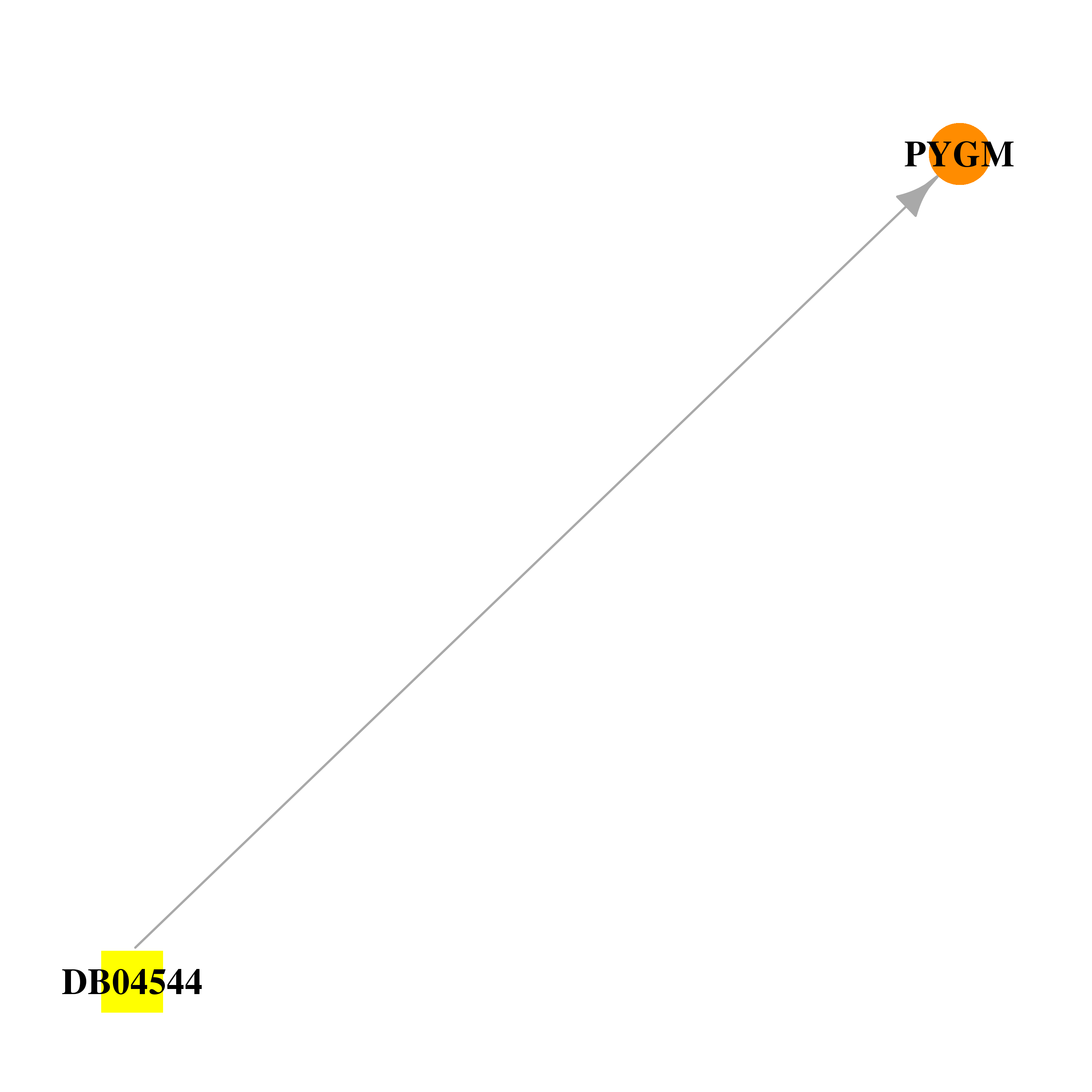 | 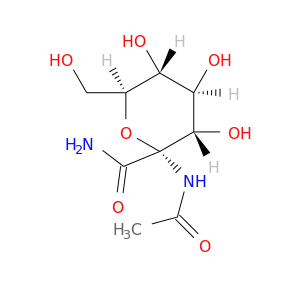 |
| DB04566 | phosphorylase, glycogen, muscle | experimental | Inosinic Acid | 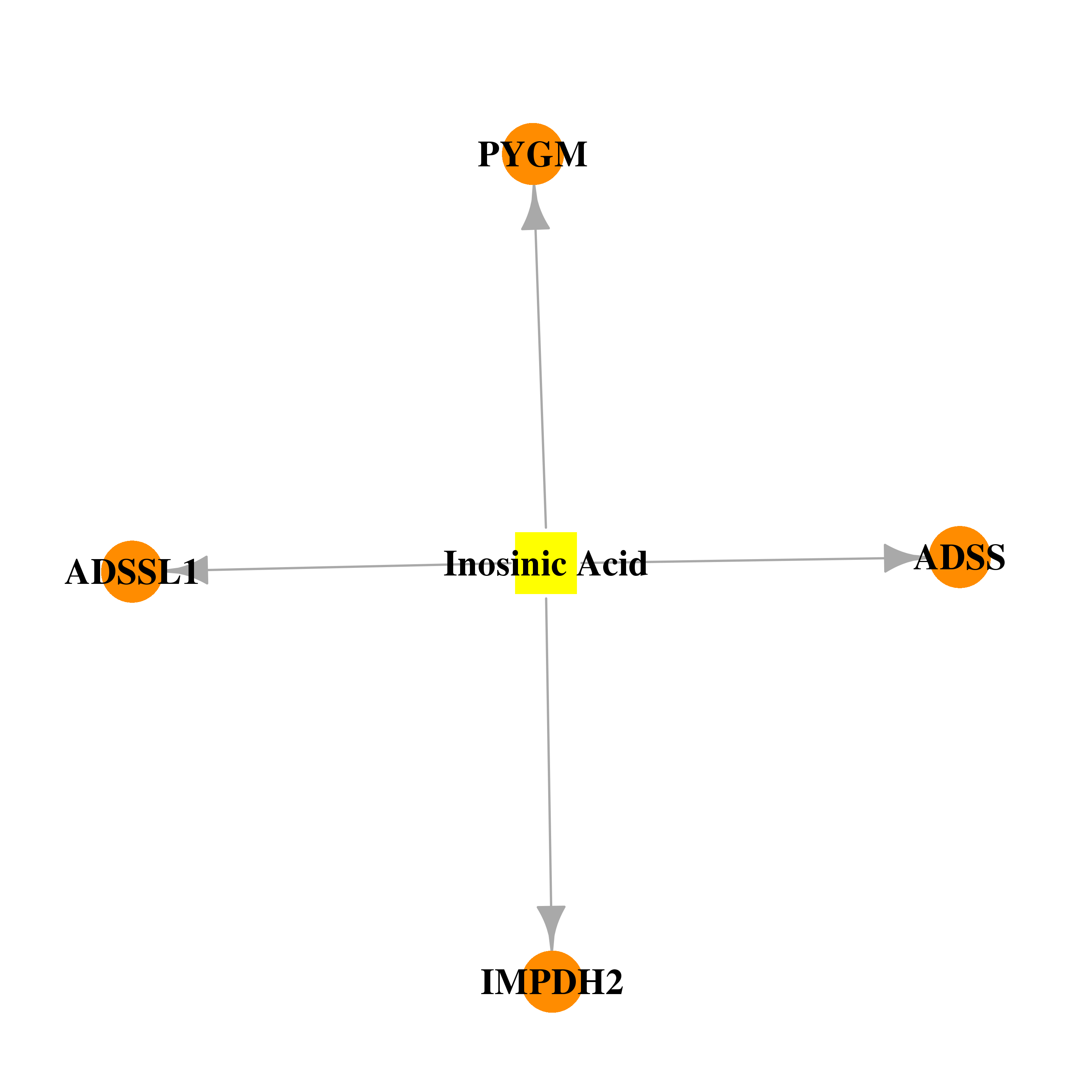 | 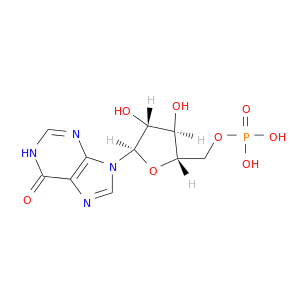 |
| DB04642 | phosphorylase, glycogen, muscle | experimental | 7-{2,6-DICHLORO-4-[3-(2-CHLORO-BENZOYL)-UREIDO]-PHENOXY}-HEPTANOIC ACID | 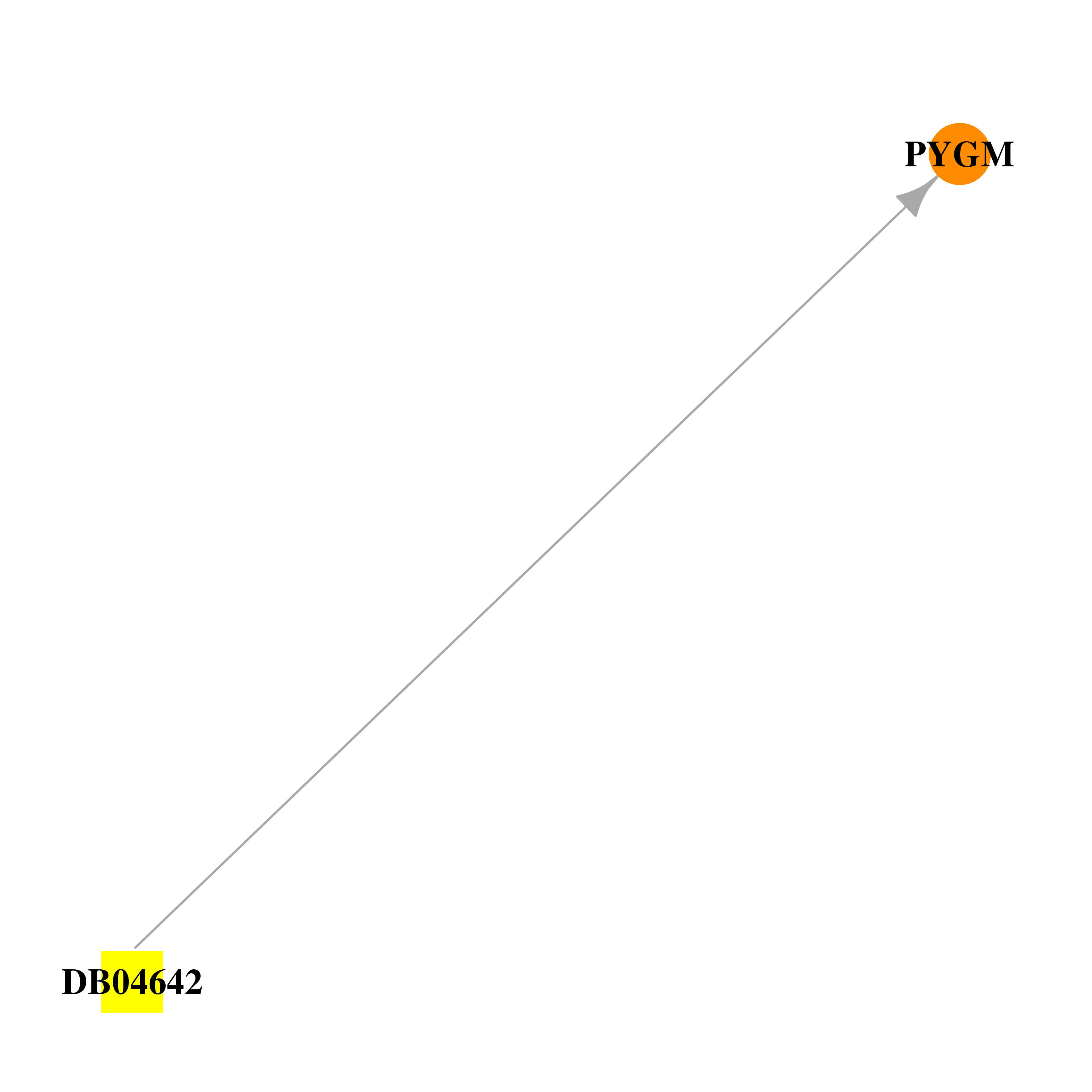 | 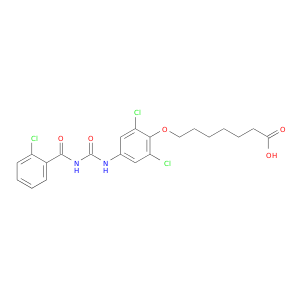 |
| DB04643 | phosphorylase, glycogen, muscle | experimental | 4-{3-CHLORO-4-[3-(2,4-DICHLORO-BENZOYL)-UREIDO]-PHENOXY}-BUTYRIC ACID |  | 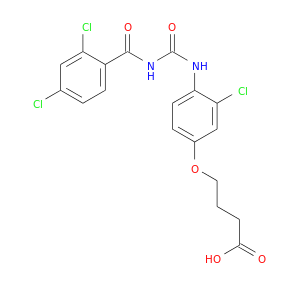 |
| DB04644 | phosphorylase, glycogen, muscle | experimental | 4-{4-[3-(2,4-DICHLORO-BENZOYL)-UREIDO]-2,3-DIMETHYL-PHENOXY}-BUTYRIC ACID | 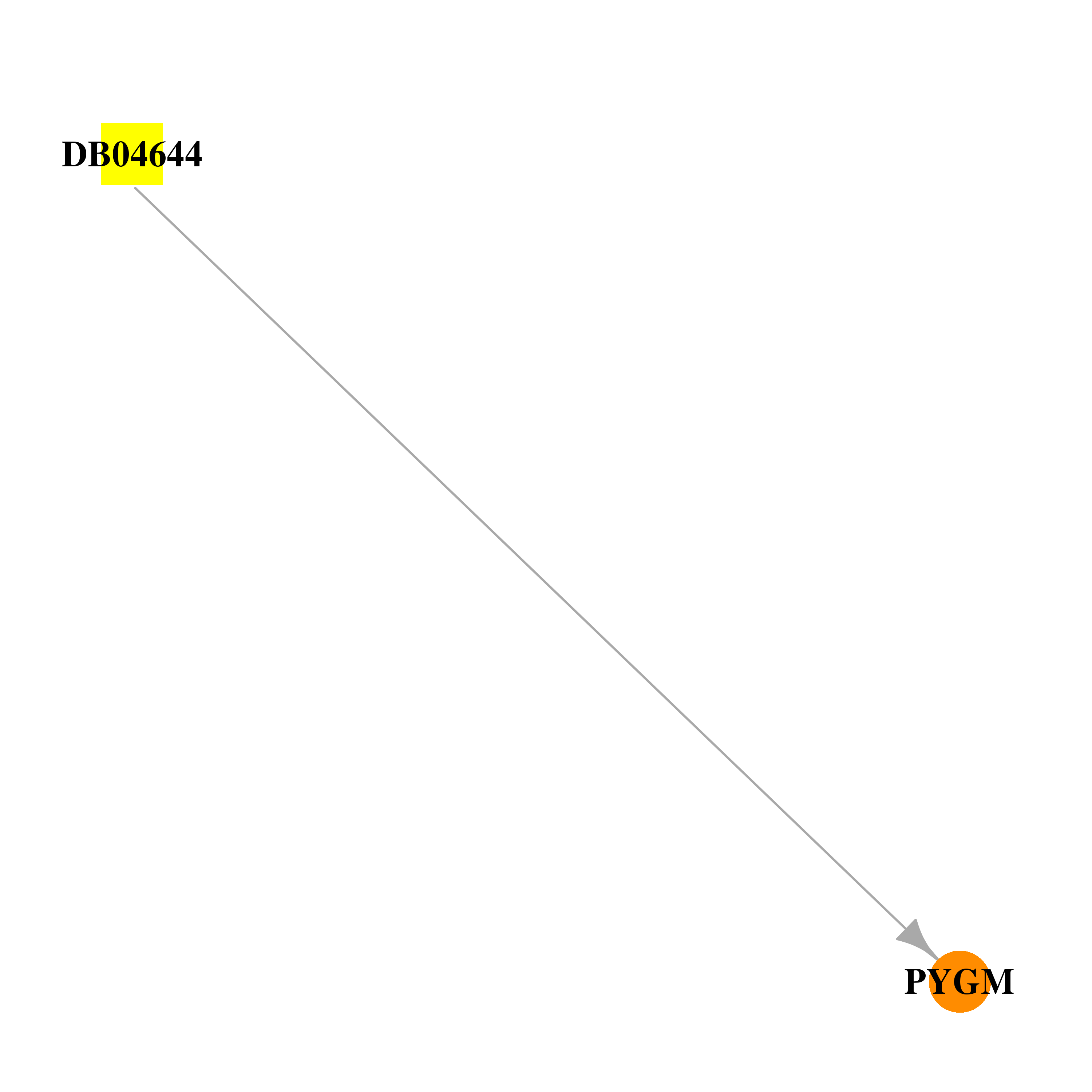 | 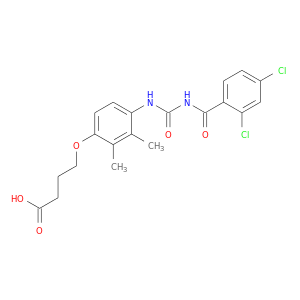 |
| DB04645 | phosphorylase, glycogen, muscle | experimental | 5-{3-[3-(2,4-DICHLORO-BENZOYL)-UREIDO]-2-METHYL-PHENOXY}-PENTANOIC ACID |  | 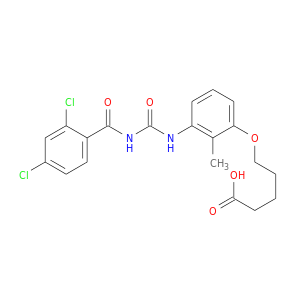 |
| DB06986 | phosphorylase, glycogen, muscle | experimental | 2-CHLORO-N-[(1R,2R)-1-HYDROXY-2,3-DIHYDRO-1H-INDEN-2-YL]-6H-THIENO[2,3-B]PYRROLE-5-CARBOXAMIDE | 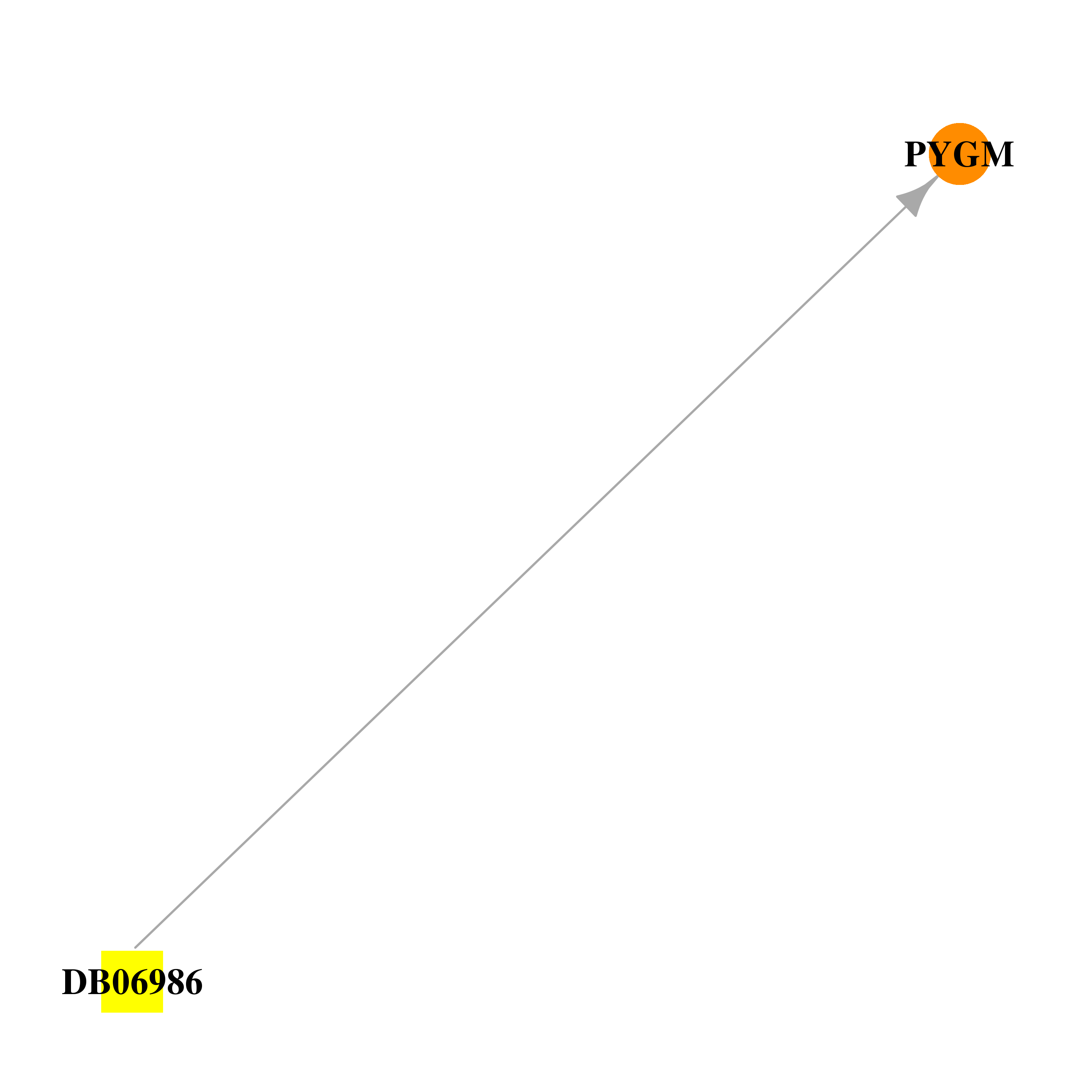 | 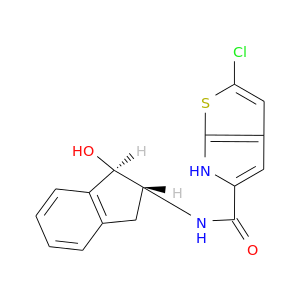 |
| DB07066 | phosphorylase, glycogen, muscle | experimental | 2-CHLORO-N-[(3R)-2-OXO-1,2,3,4-TETRAHYDROQUINOLIN-3-YL]-6H-THIENO[2,3-B]PYRROLE-5-CARBOXAMIDE |  | 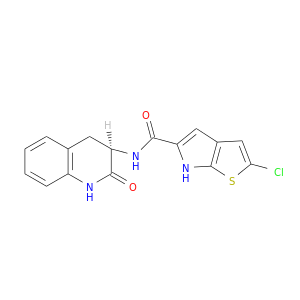 |
| DB07792 | phosphorylase, glycogen, muscle | experimental | (S)-2-CHLORO-N-(1-(2-(2-HYDROXYETHYLAMINO)-2-OXOETHYL)-2-OXO-1,2,3,4-TETRAHYDROQUINOLIN-3-YL)-6H-THIENO[2,3-B]PYRROLE-5-CARBOXAMIDE | 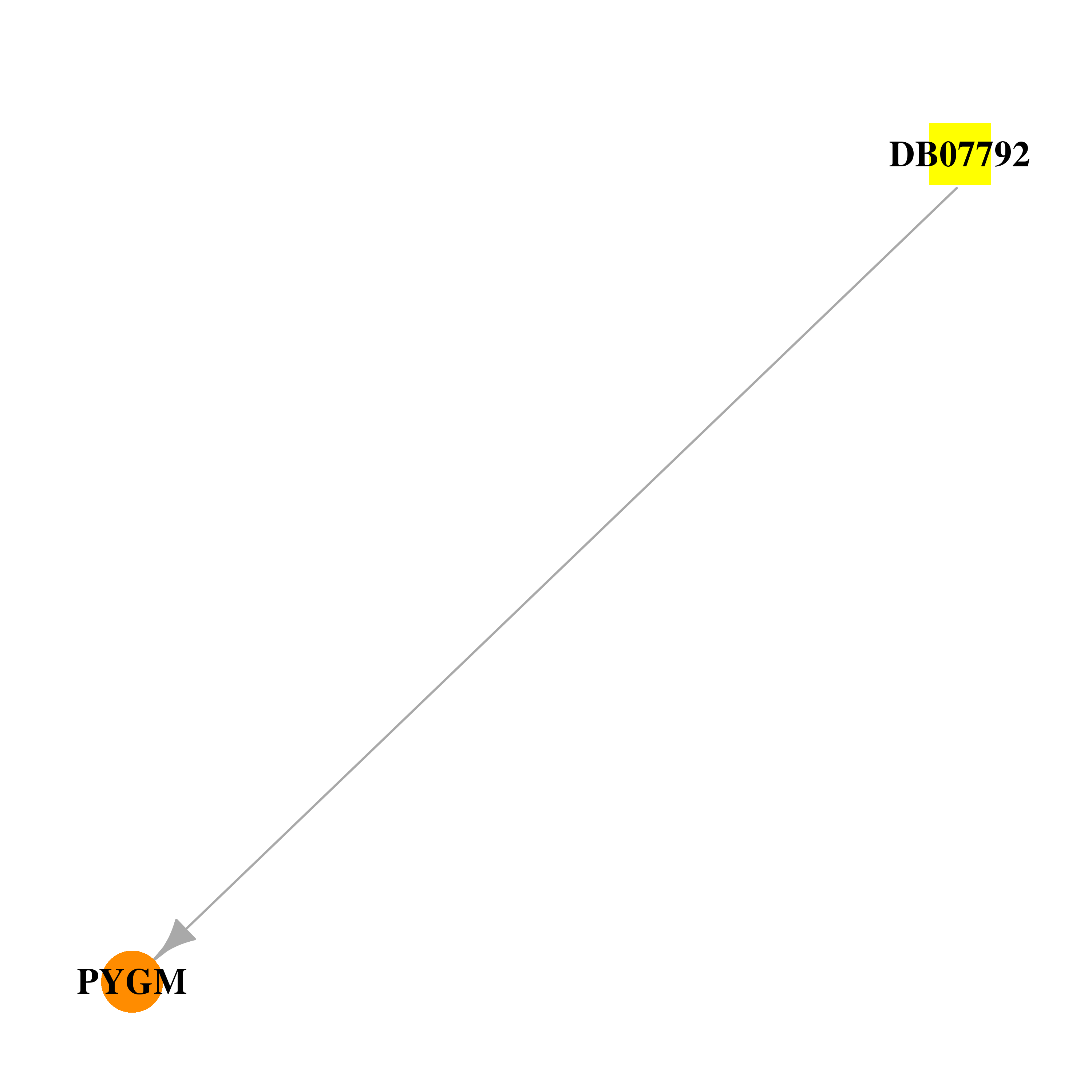 |  |
| DB07793 | phosphorylase, glycogen, muscle | experimental | (2S)-N-[(3S)-1-(2-AMINO-2-OXOETHYL)-2-OXO-1,2,3,4-TETRAHYDROQUINOLIN-3-YL]-2-CHLORO-2H-THIENO[2,3-B]PYRROLE-5-CARBOXAMIDE |  | 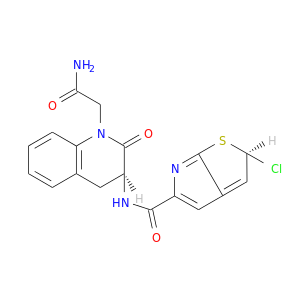 |
| DB07807 | phosphorylase, glycogen, muscle | experimental | (3R,4R,5R)-5-(HYDROXYMETHYL)-1-(3-PHENYLPROPYL)PIPERIDINE-3,4-DIOL | 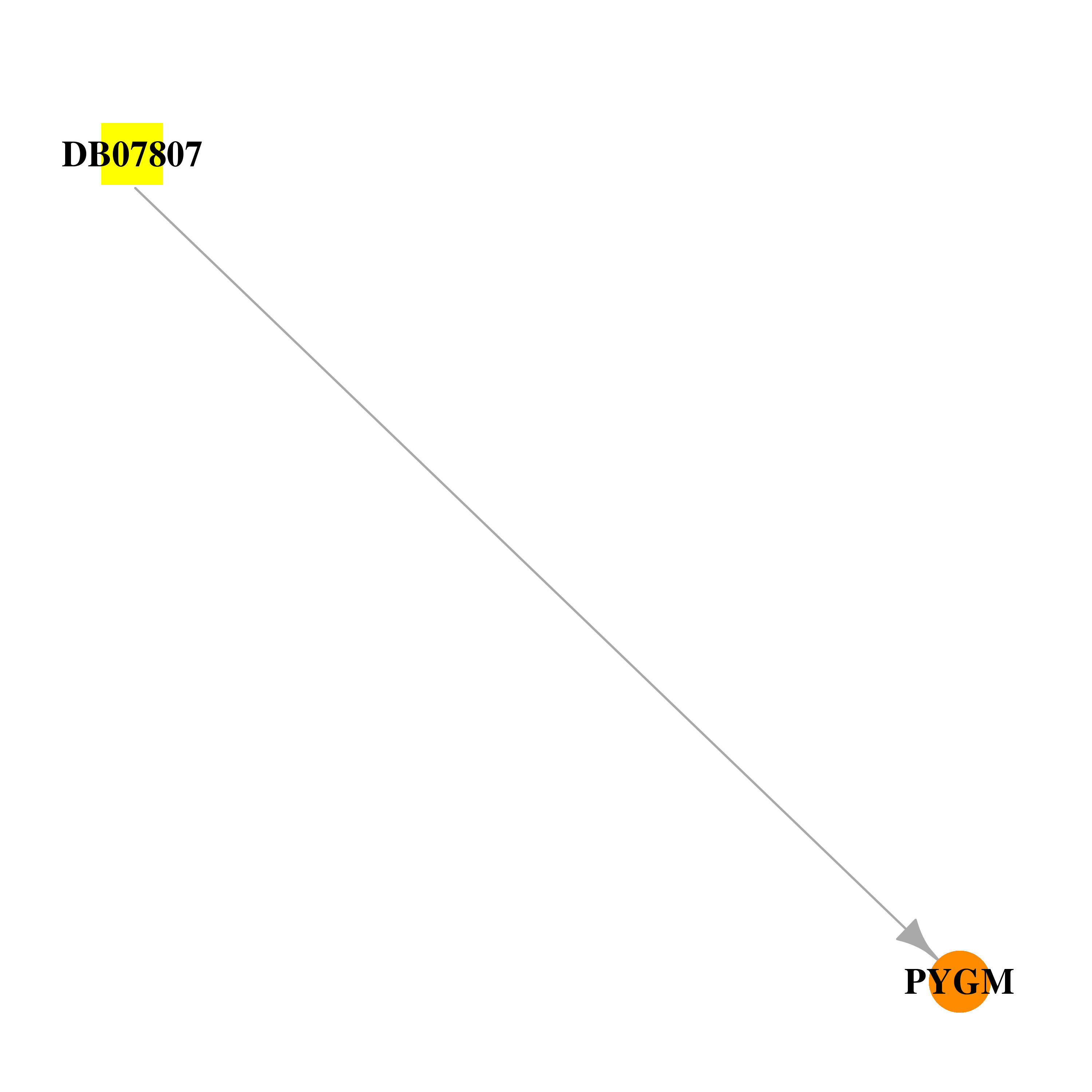 | 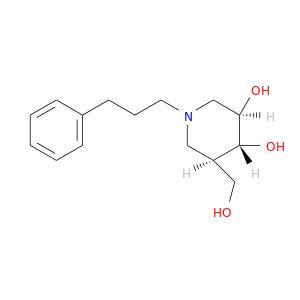 |
| DB07949 | phosphorylase, glycogen, muscle | experimental | ({[(3E)-2'-OXO-2',7'-DIHYDRO-2,3'-BIINDOL-3(7H)-YLIDENE]AMINO}OXY)ACETIC ACID | 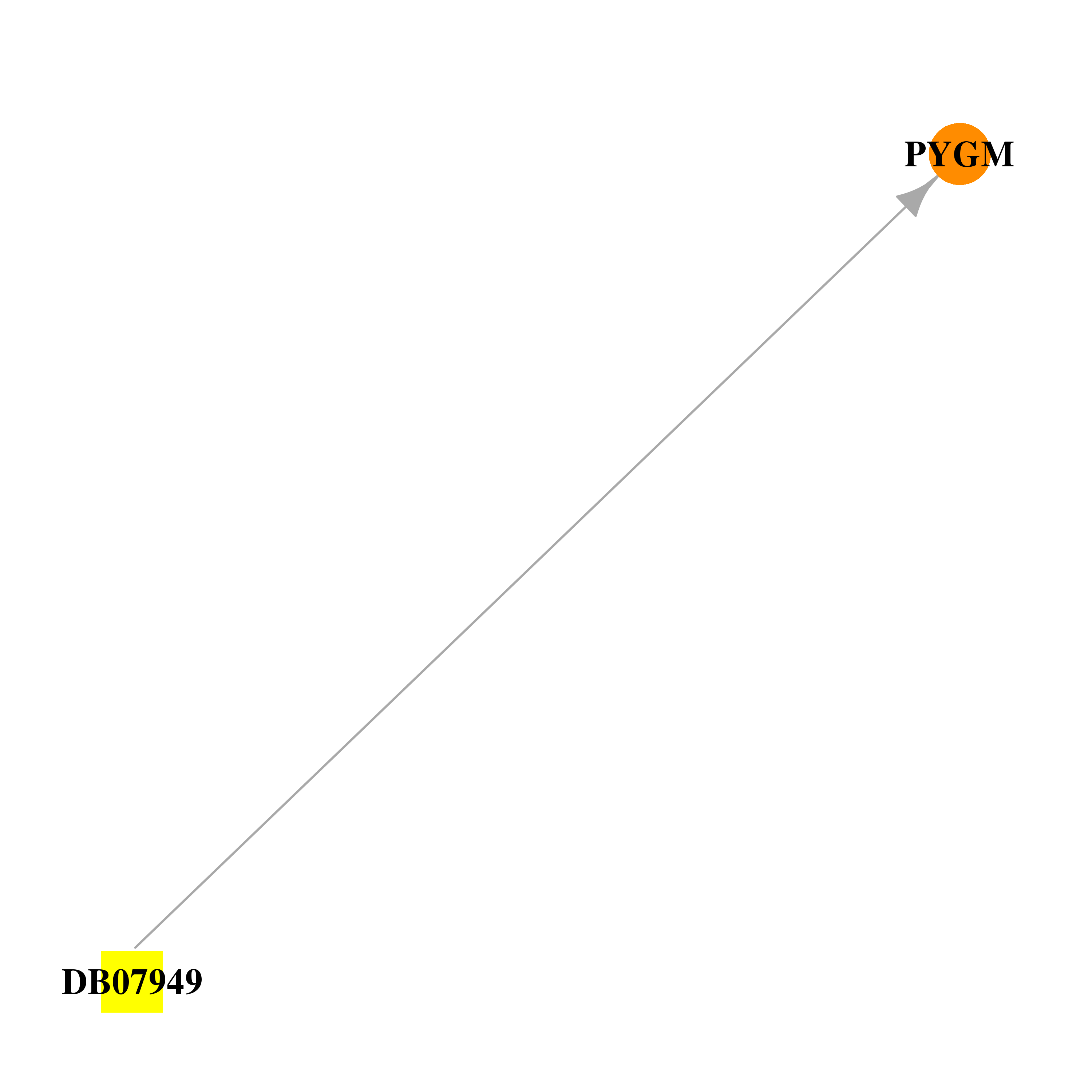 | 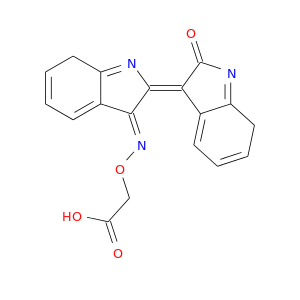 |
| DB08151 | phosphorylase, glycogen, muscle | experimental | (5R,7R,8S,9S,10R)-7-(hydroxymethyl)-3-phenyl-1,6-dioxa-2-azaspiro[4.5]dec-2-ene-8,9,10-triol | 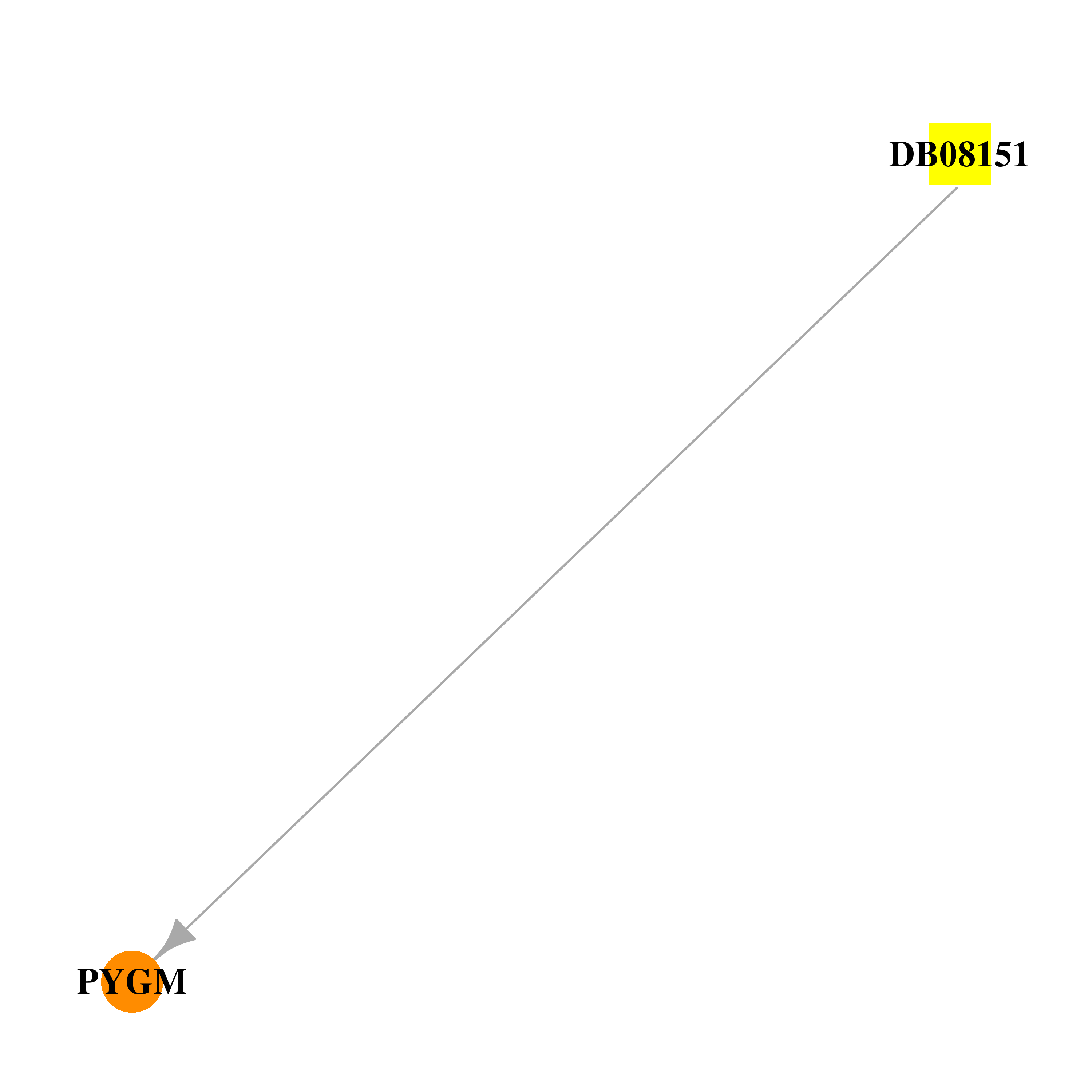 | 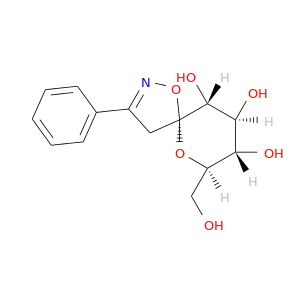 |
| DB08322 | phosphorylase, glycogen, muscle | experimental | 2-DEOXY-3,4-BIS-O-[3-(4-HYDROXYPHENYL)PROPANOYL]-L-THREO-PENTARIC ACID | 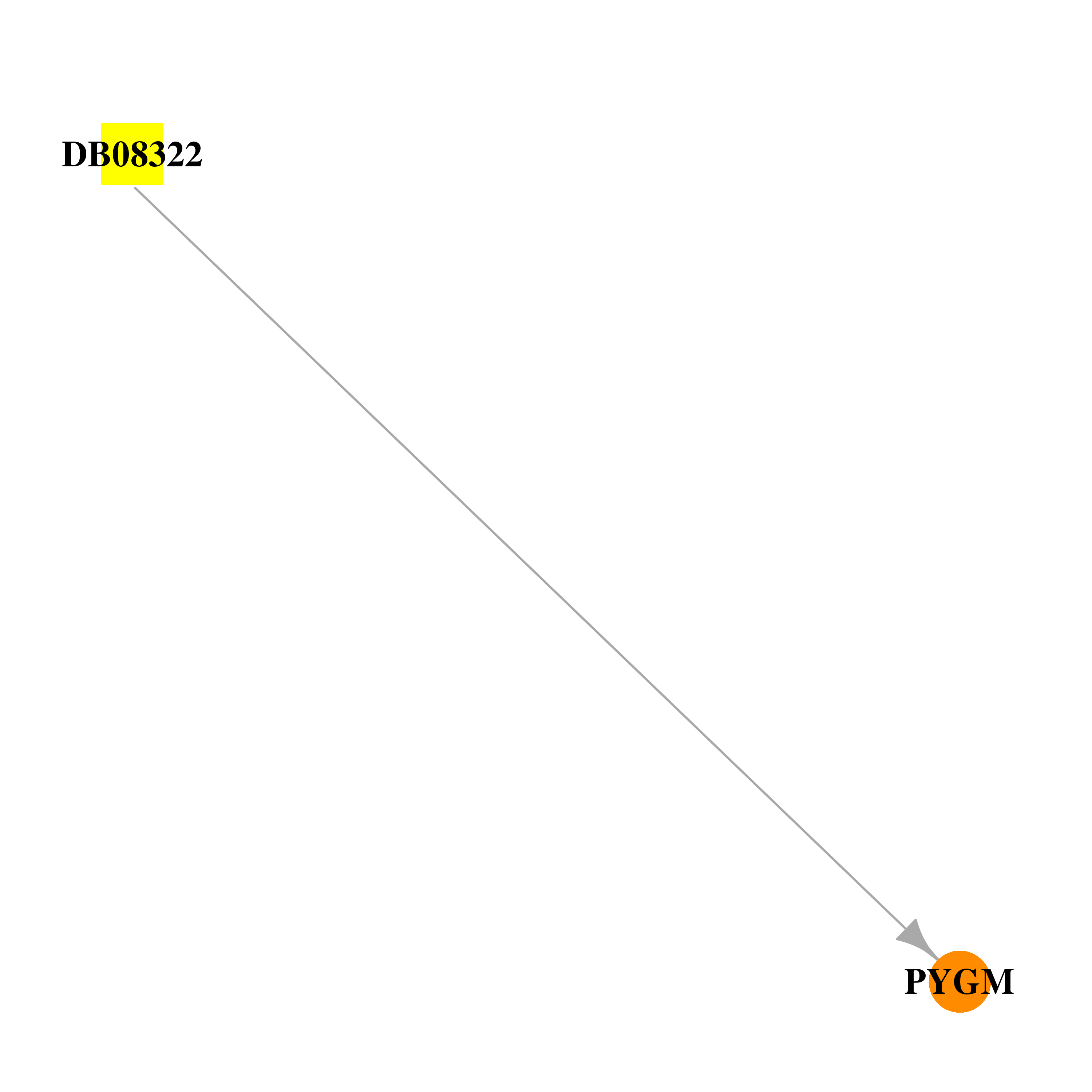 | 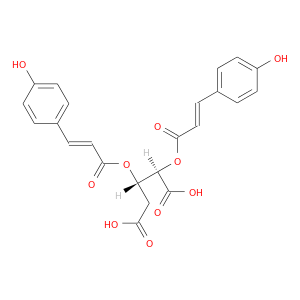 |
| DB08500 | phosphorylase, glycogen, muscle | experimental | (3S,5R,7R,8S,9S,10R)-7-(hydroxymethyl)-3-(2-naphthyl)-1,6-dioxa-2-azaspiro[4.5]decane-8,9,10-triol | 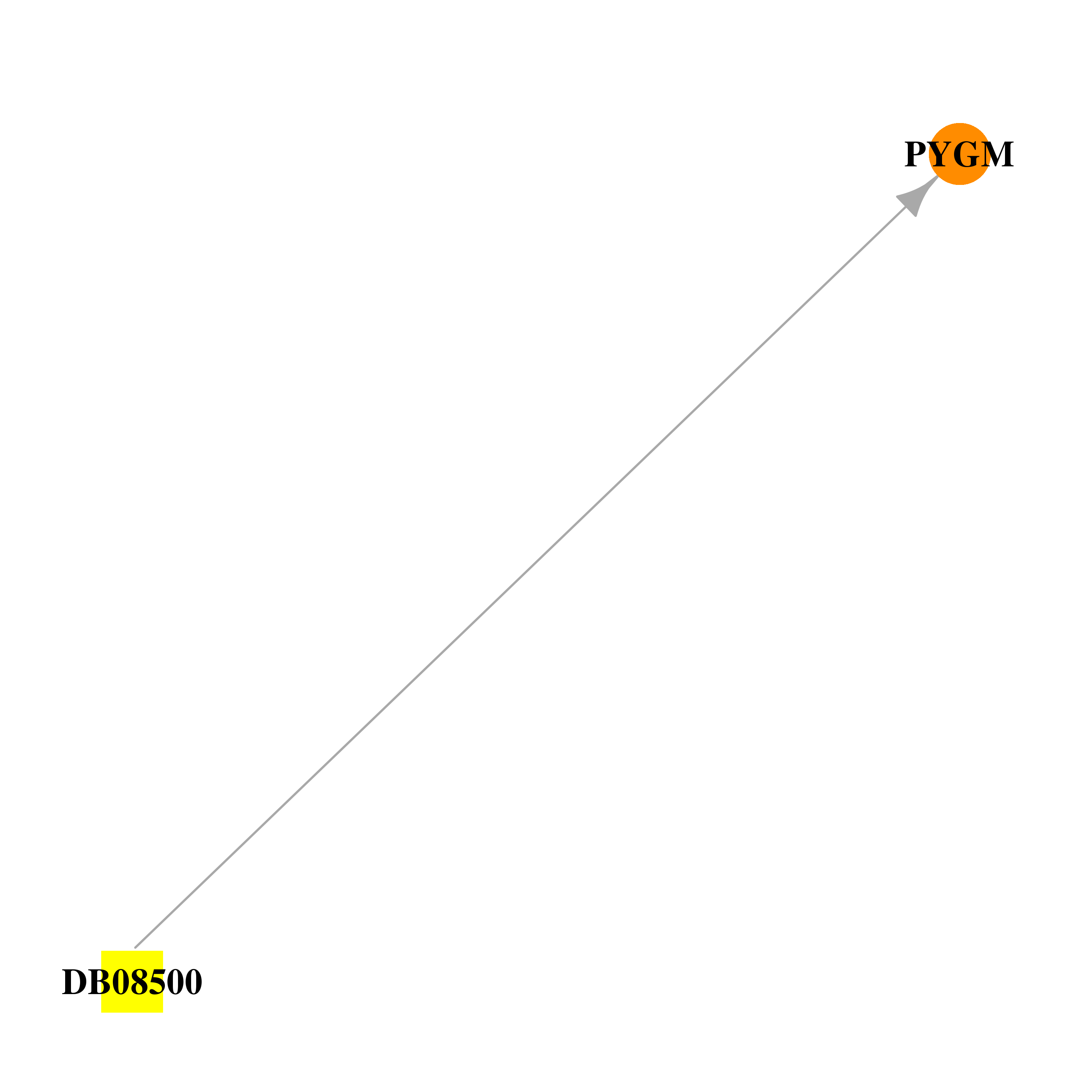 |  |
| DB08503 | phosphorylase, glycogen, muscle | experimental | (3S,5R,7R,8S,9S,10R)-7-(hydroxymethyl)-3-(4-methylphenyl)-1,6-dioxa-2-azaspiro[4.5]decane-8,9,10-triol |  | 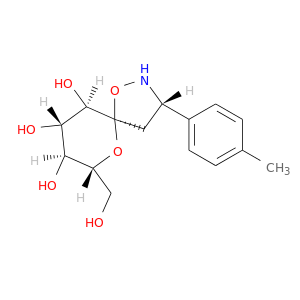 |
| DB01076 | phosphorylase, glycogen, muscle | approved | Atorvastatin | 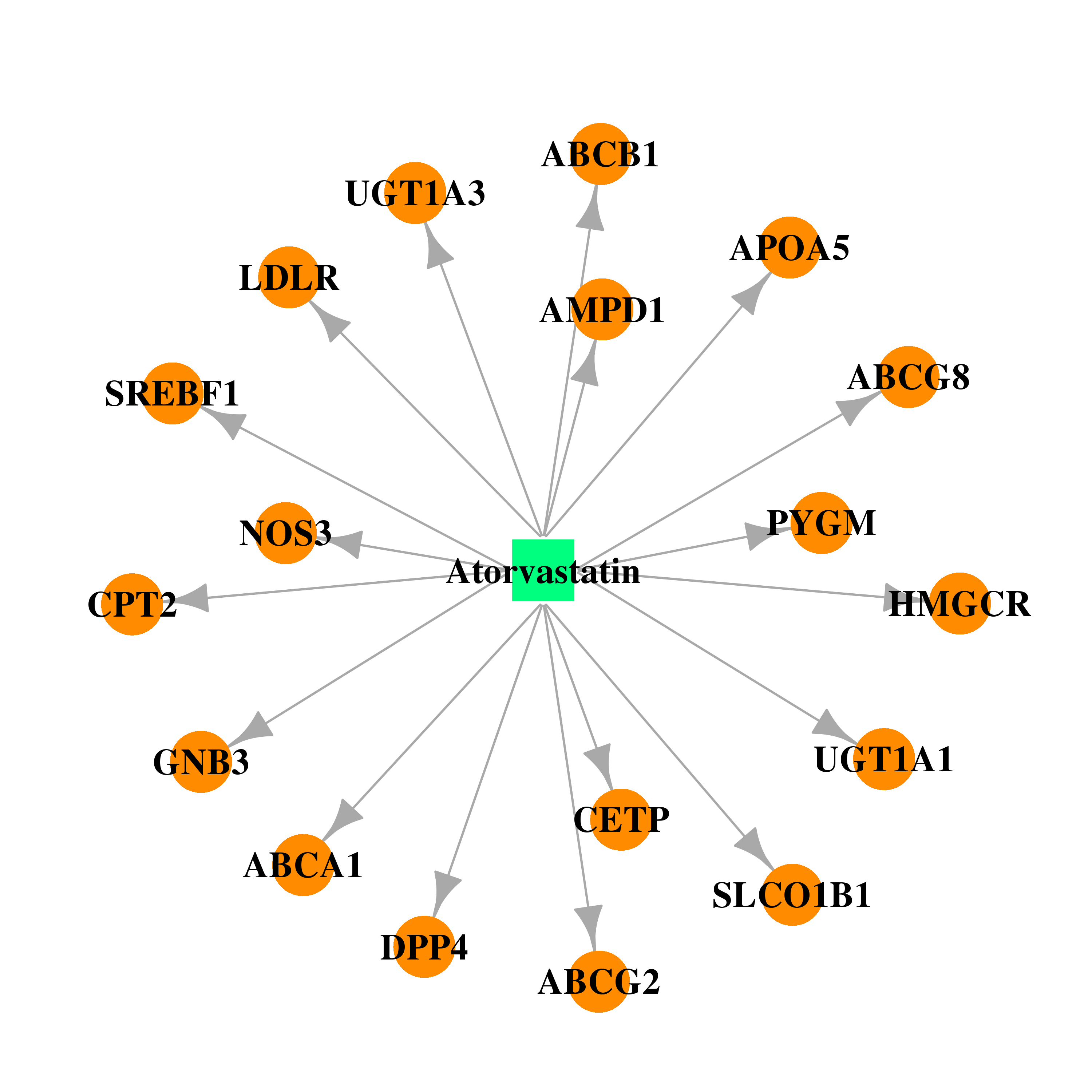 | 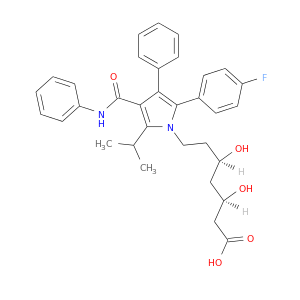 |
| DB00439 | phosphorylase, glycogen, muscle | withdrawn | Cerivastatin |  | 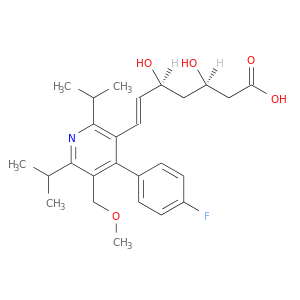 |
| DB01095 | phosphorylase, glycogen, muscle | approved | Fluvastatin | 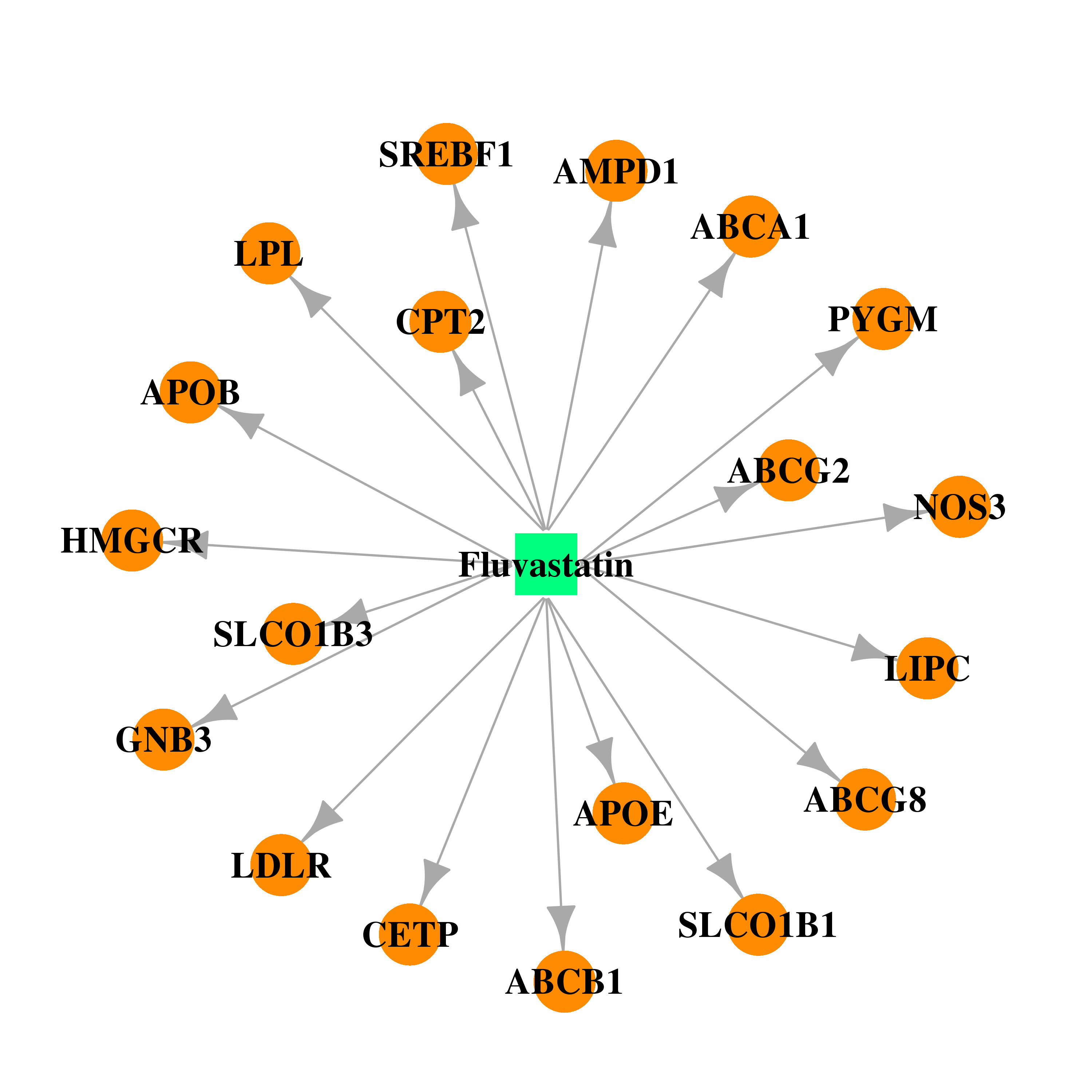 | 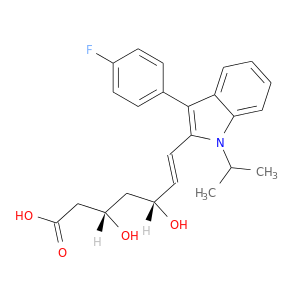 |
| DB00175 | phosphorylase, glycogen, muscle | approved | Pravastatin | 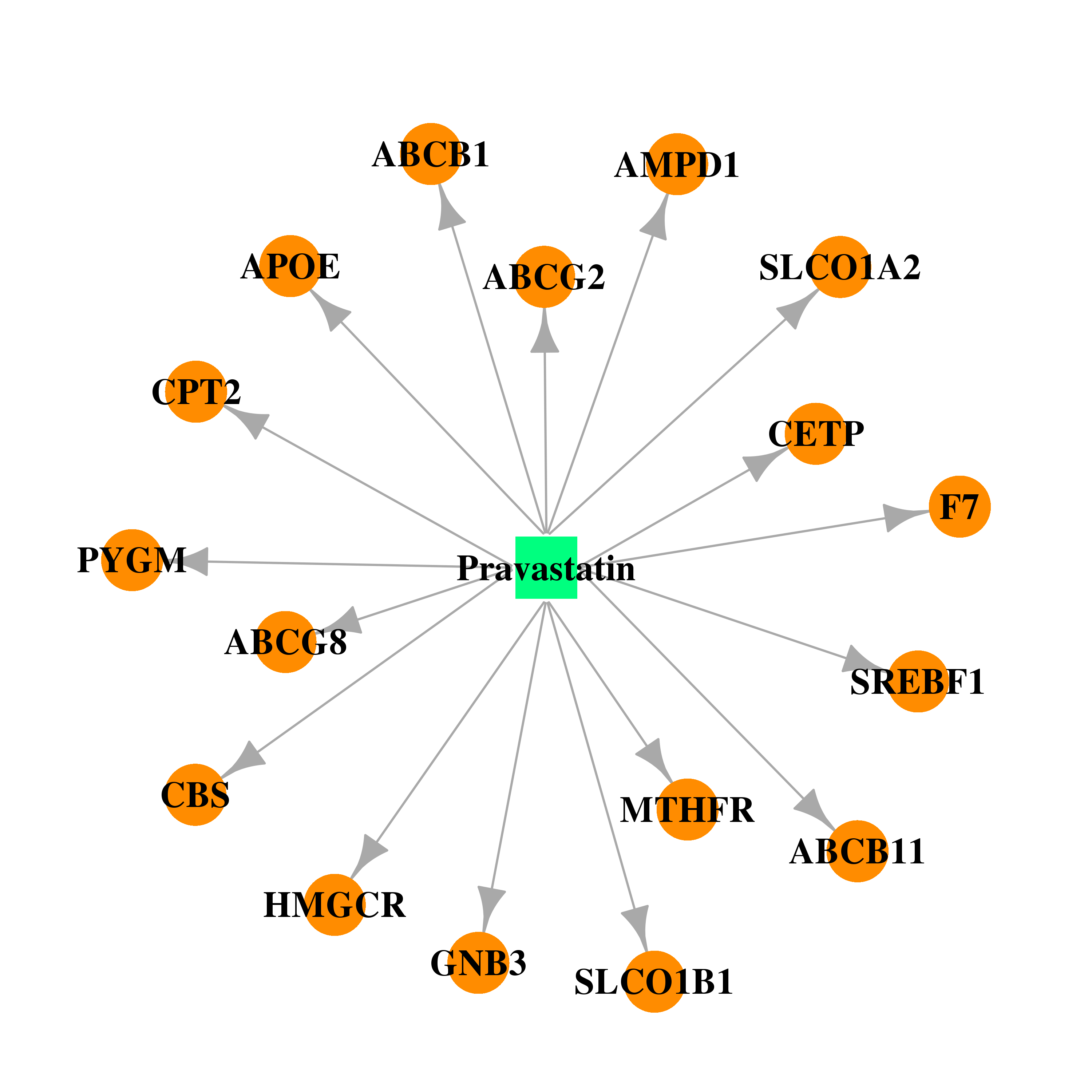 | 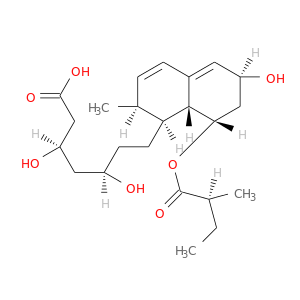 |
| DB01098 | phosphorylase, glycogen, muscle | approved | Rosuvastatin | 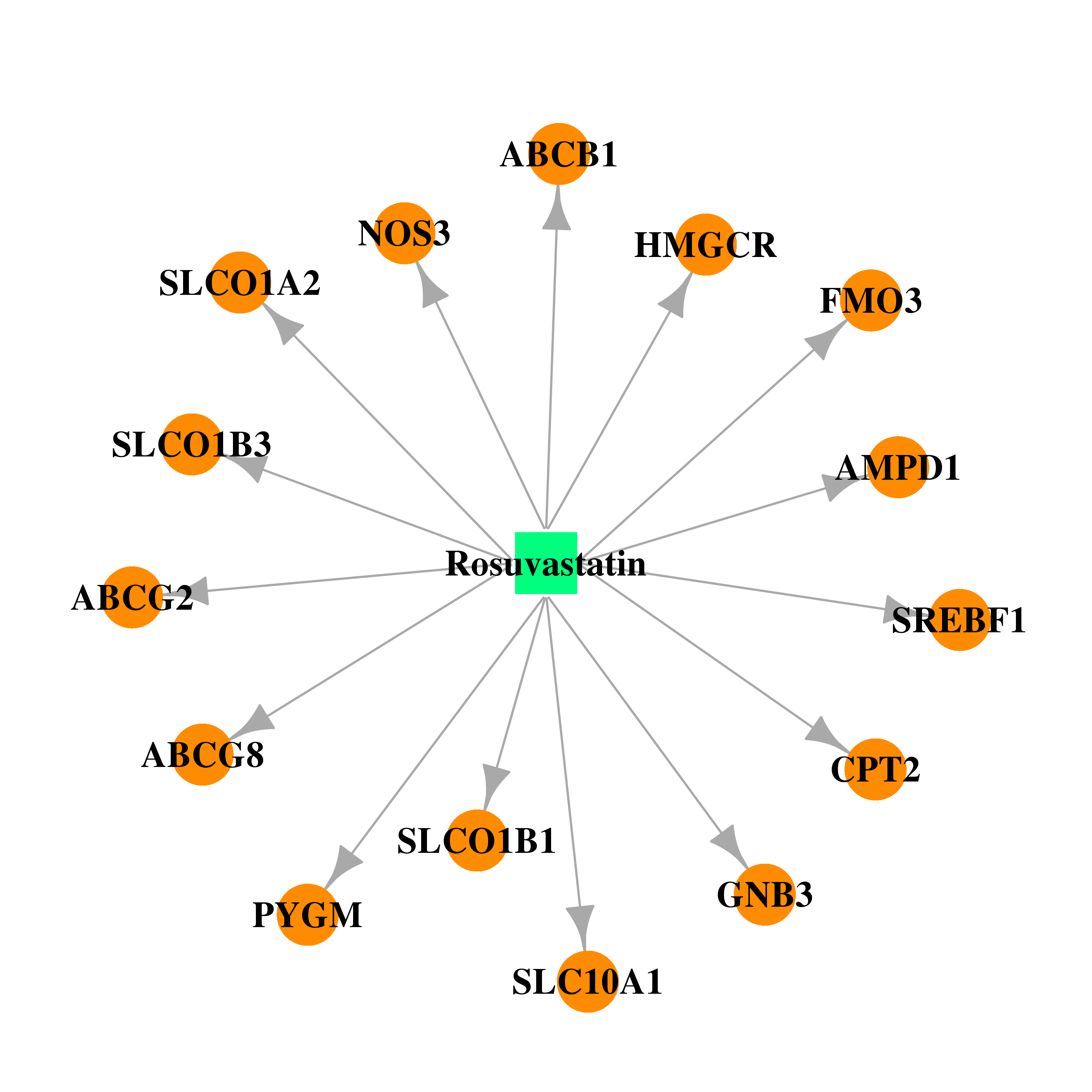 | 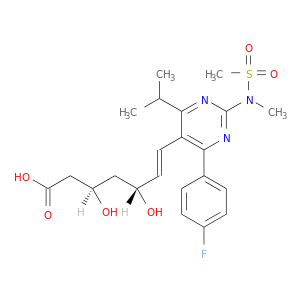 |
| DB00641 | phosphorylase, glycogen, muscle | approved | Simvastatin |  |  |
| Top |
| Cross referenced IDs for PYGM |
| * We obtained these cross-references from Uniprot database. It covers 150 different DBs, 18 categories. http://www.uniprot.org/help/cross_references_section |
: Open all cross reference information
|
Copyright © 2016-Present - The Univsersity of Texas Health Science Center at Houston @ |







